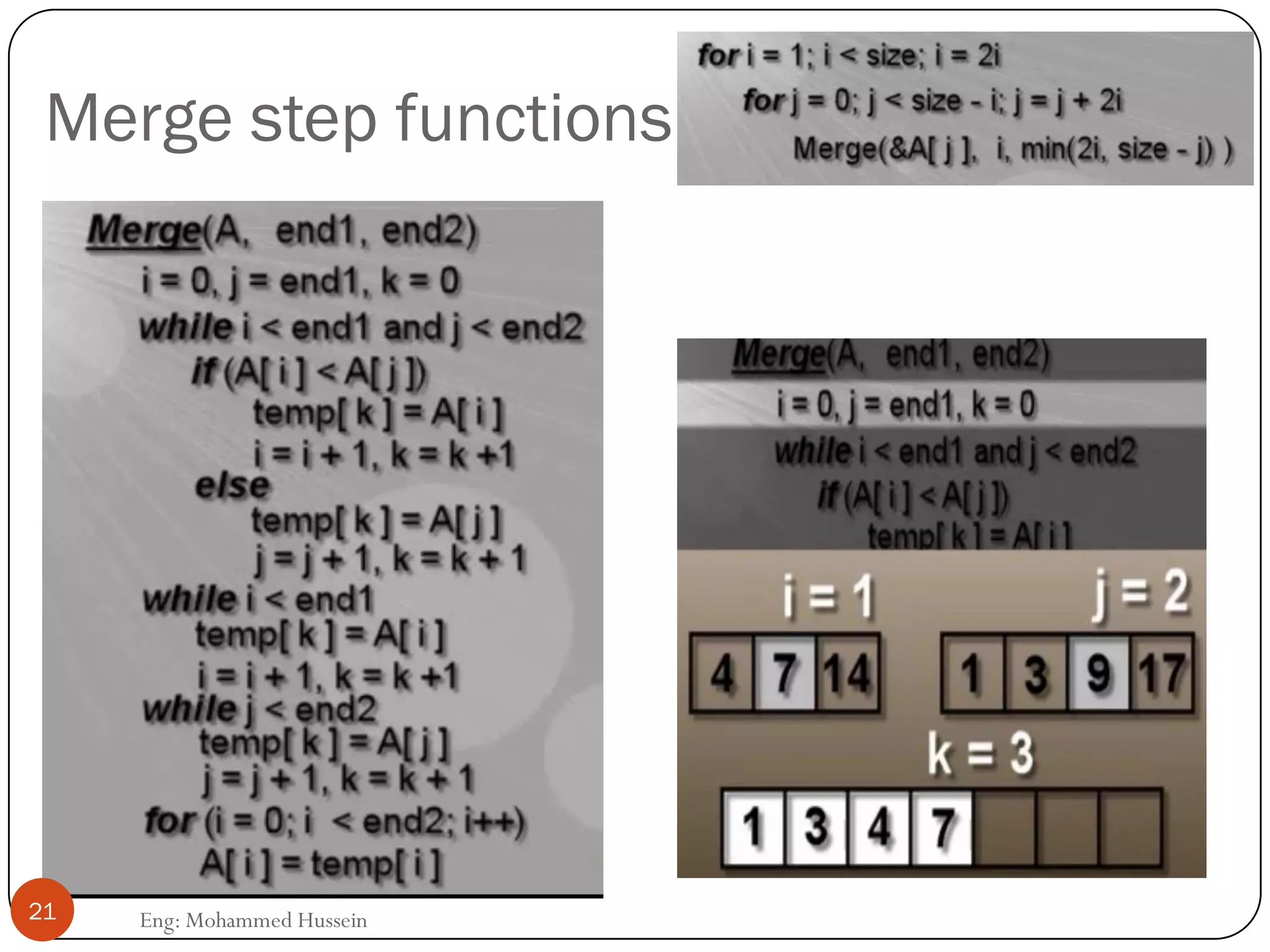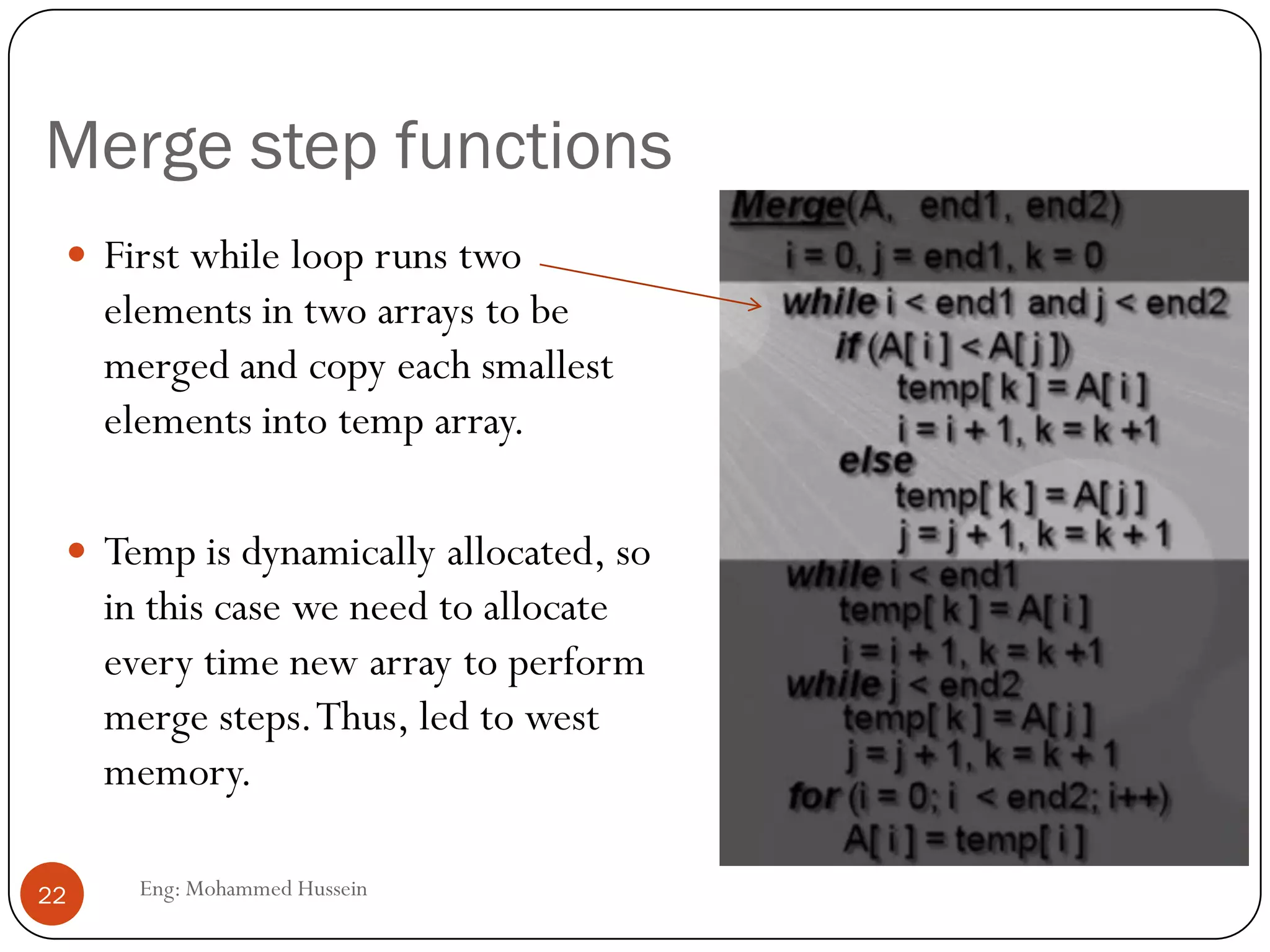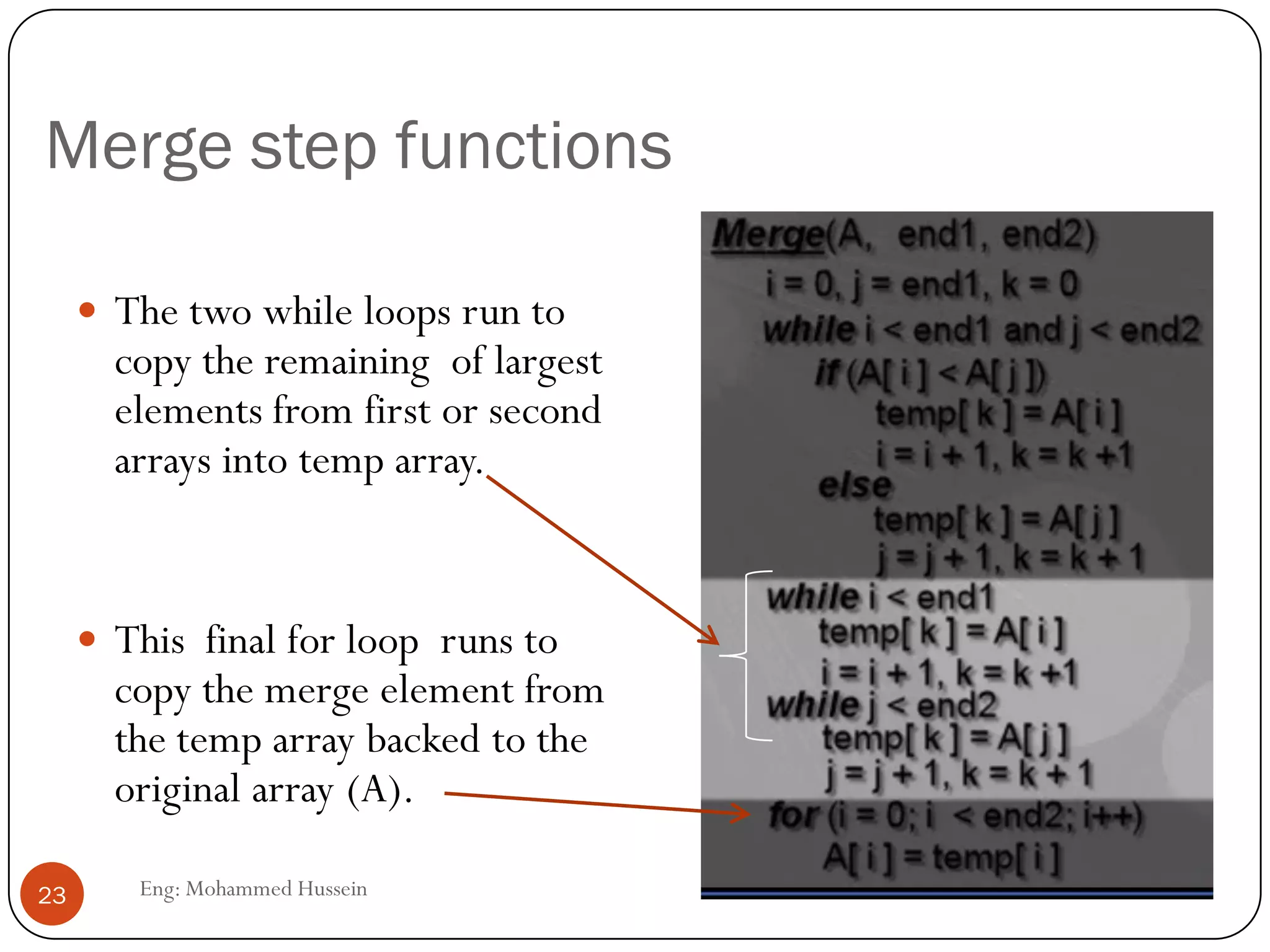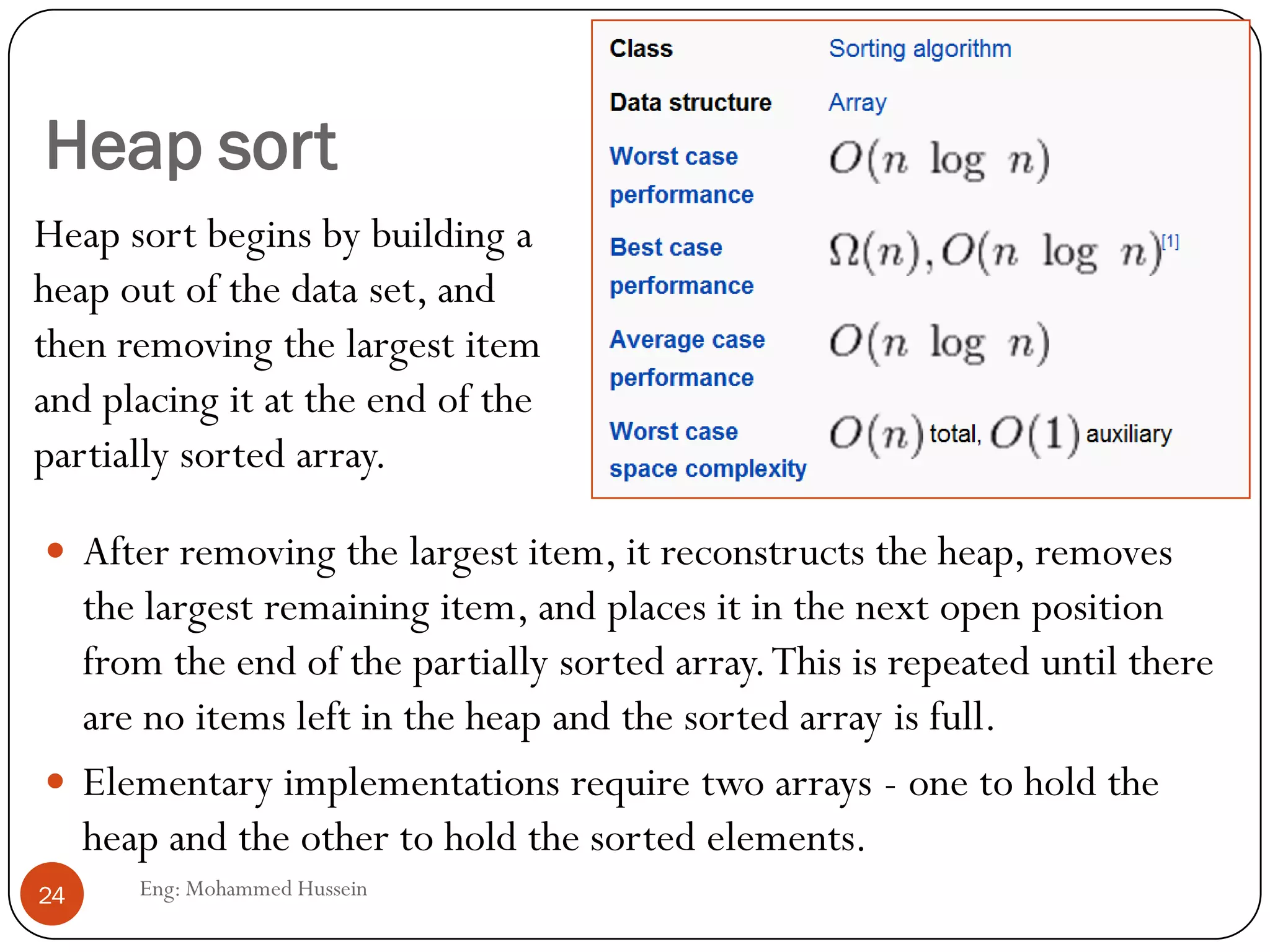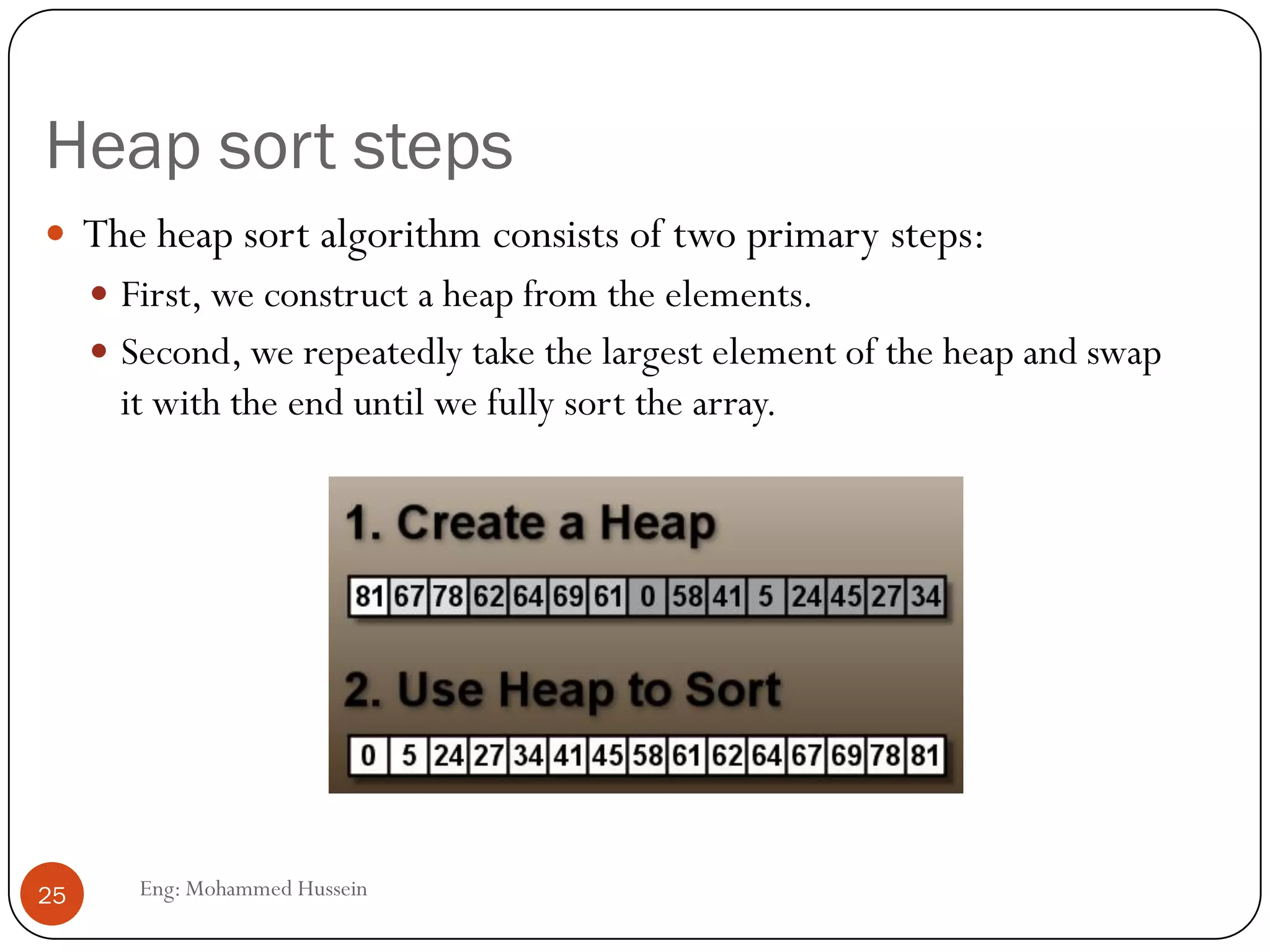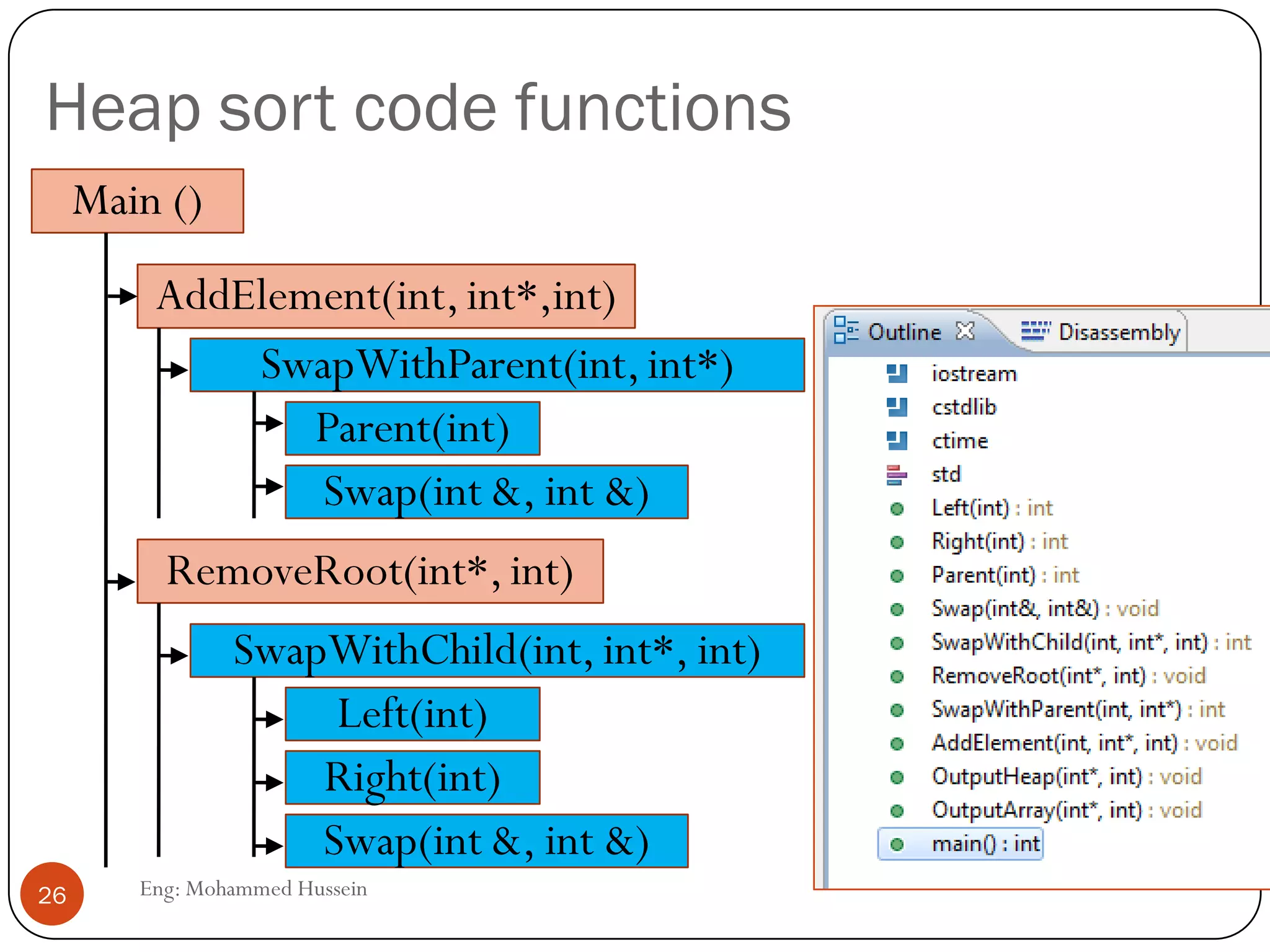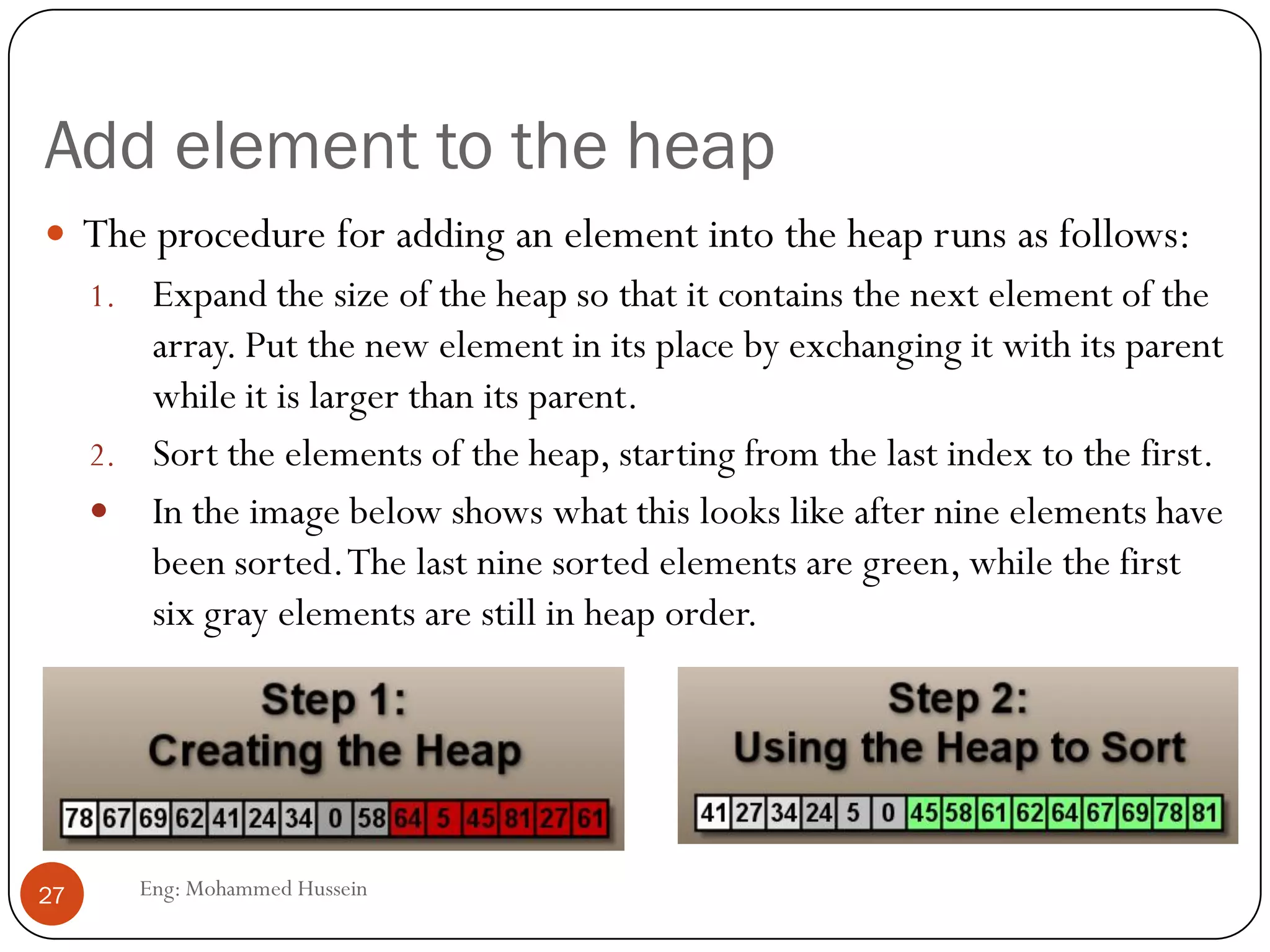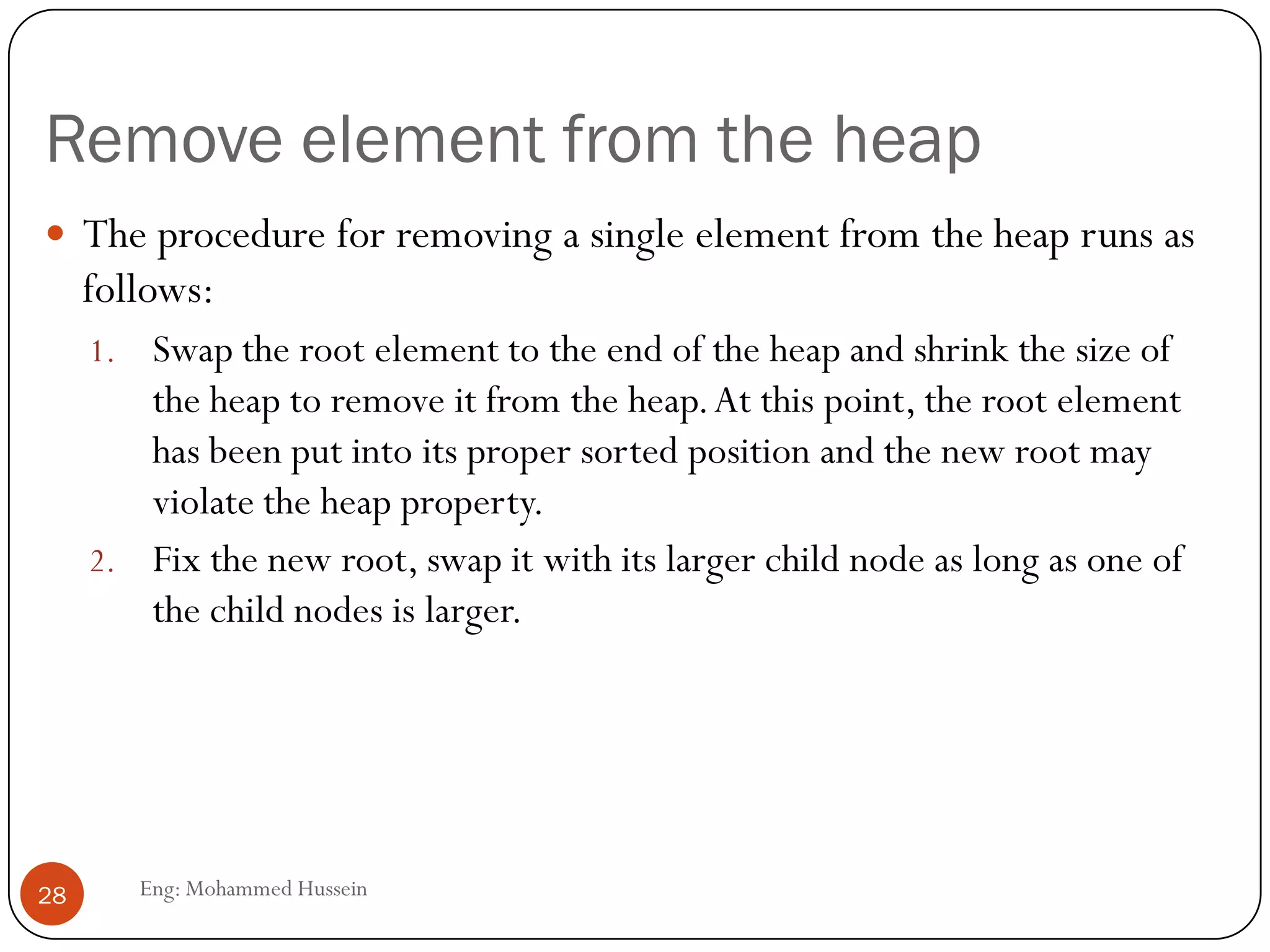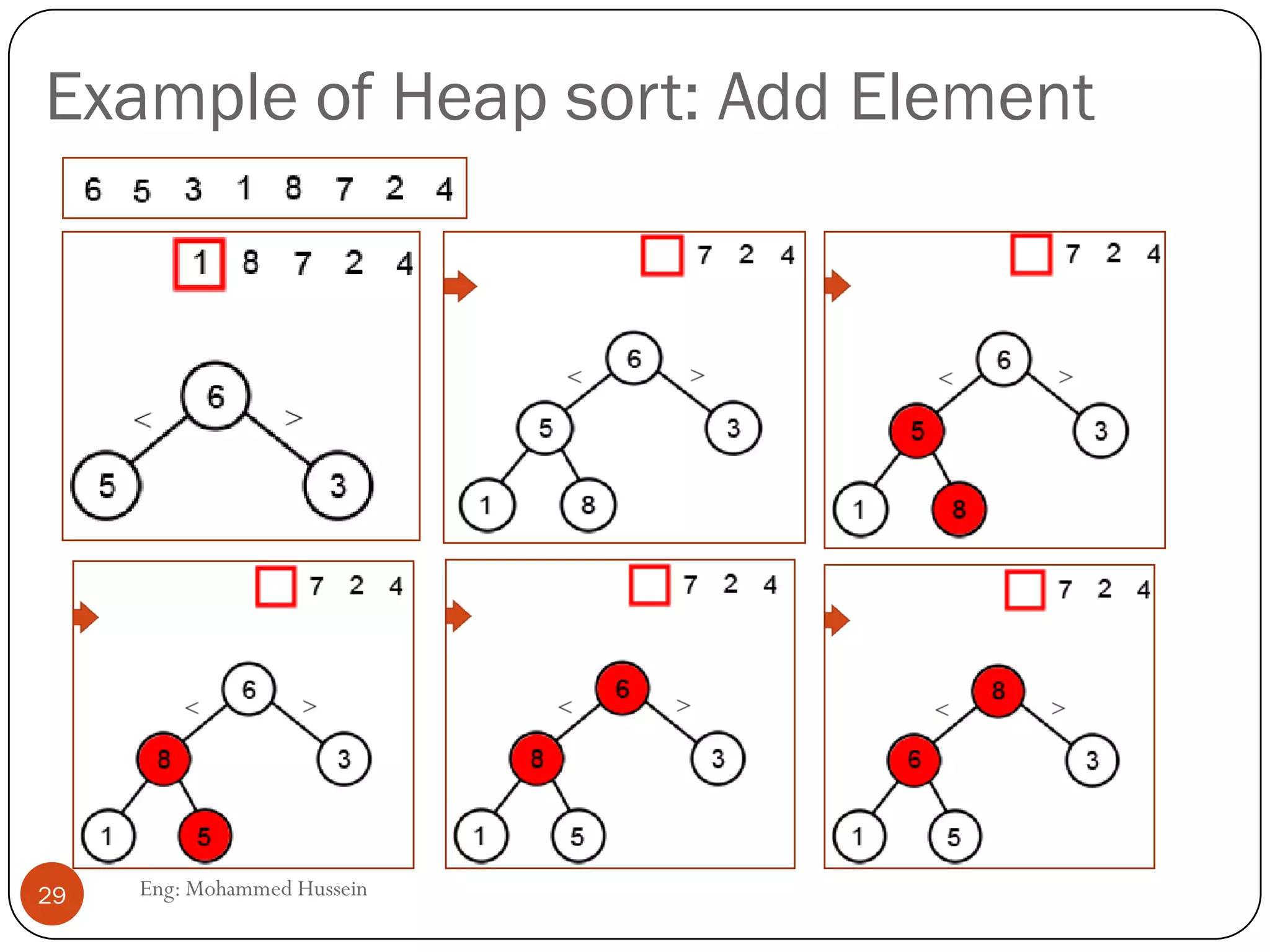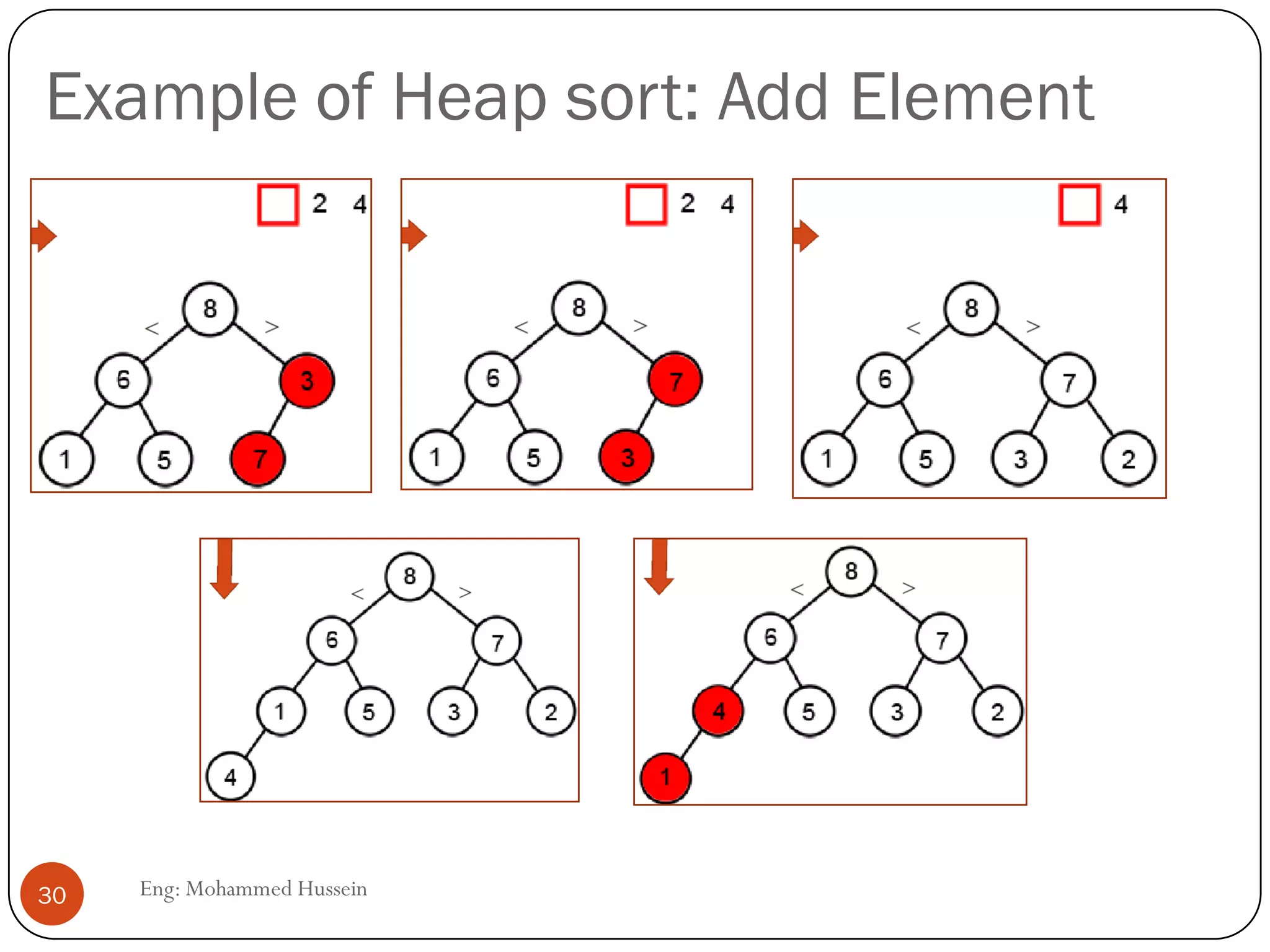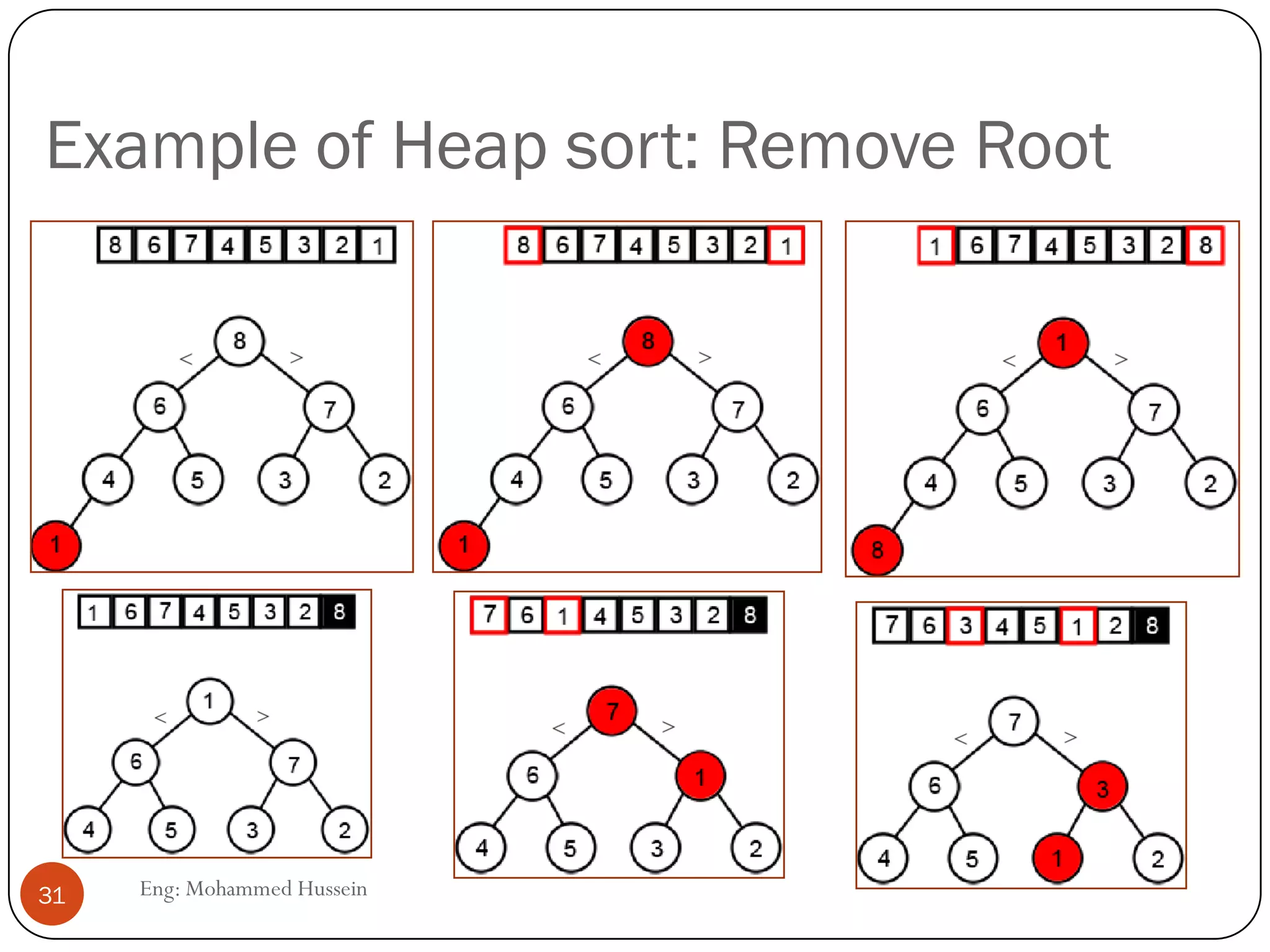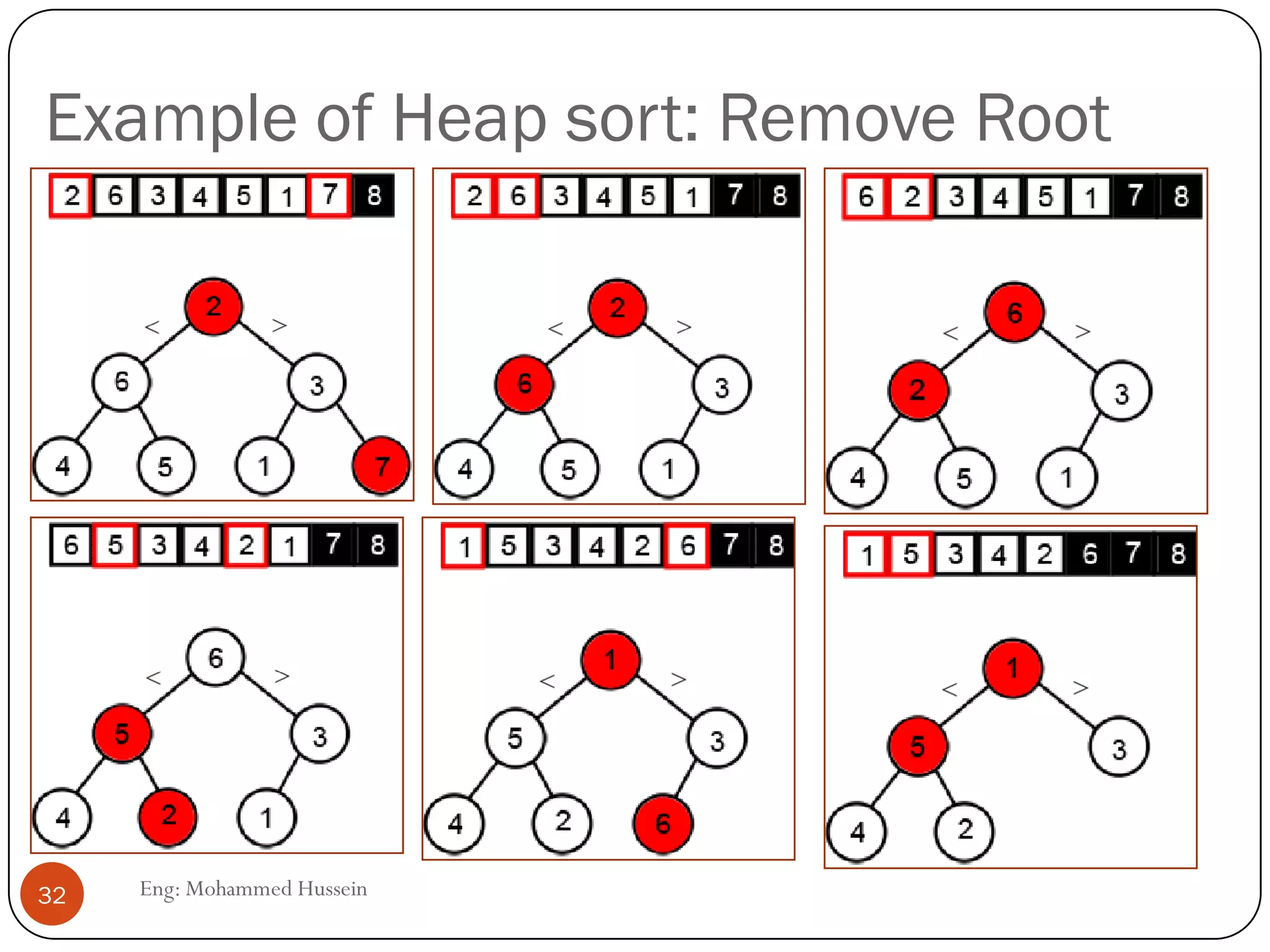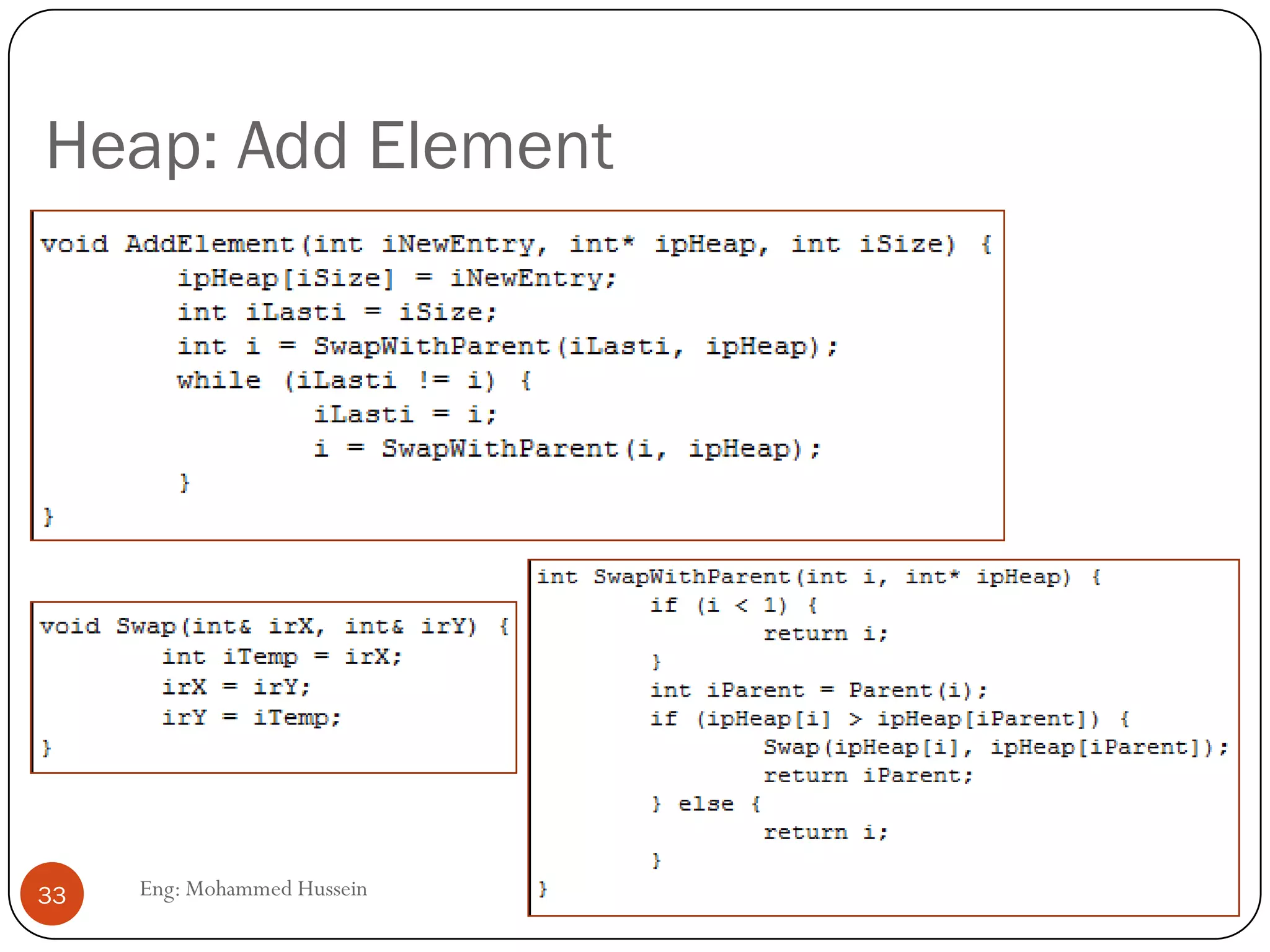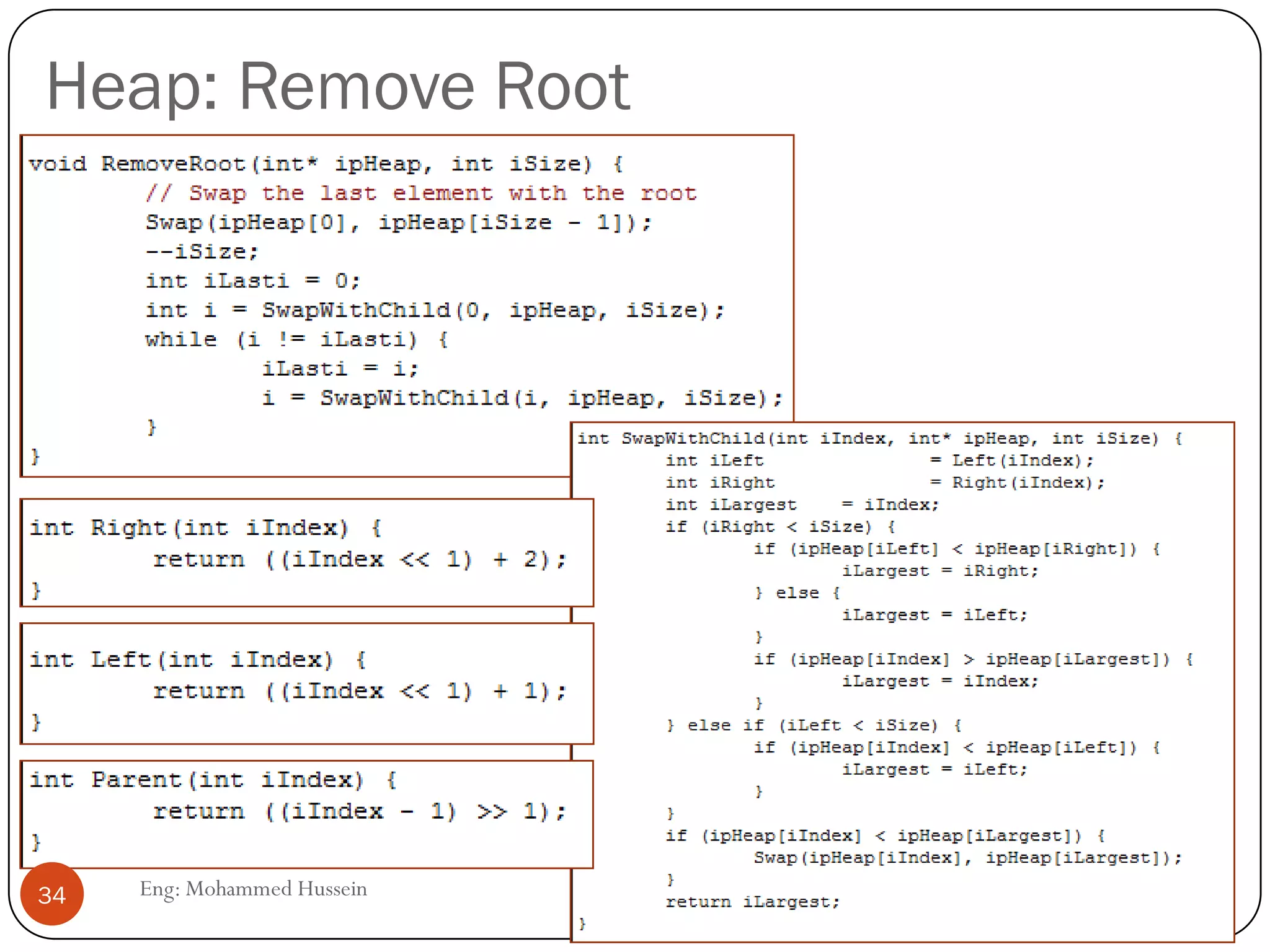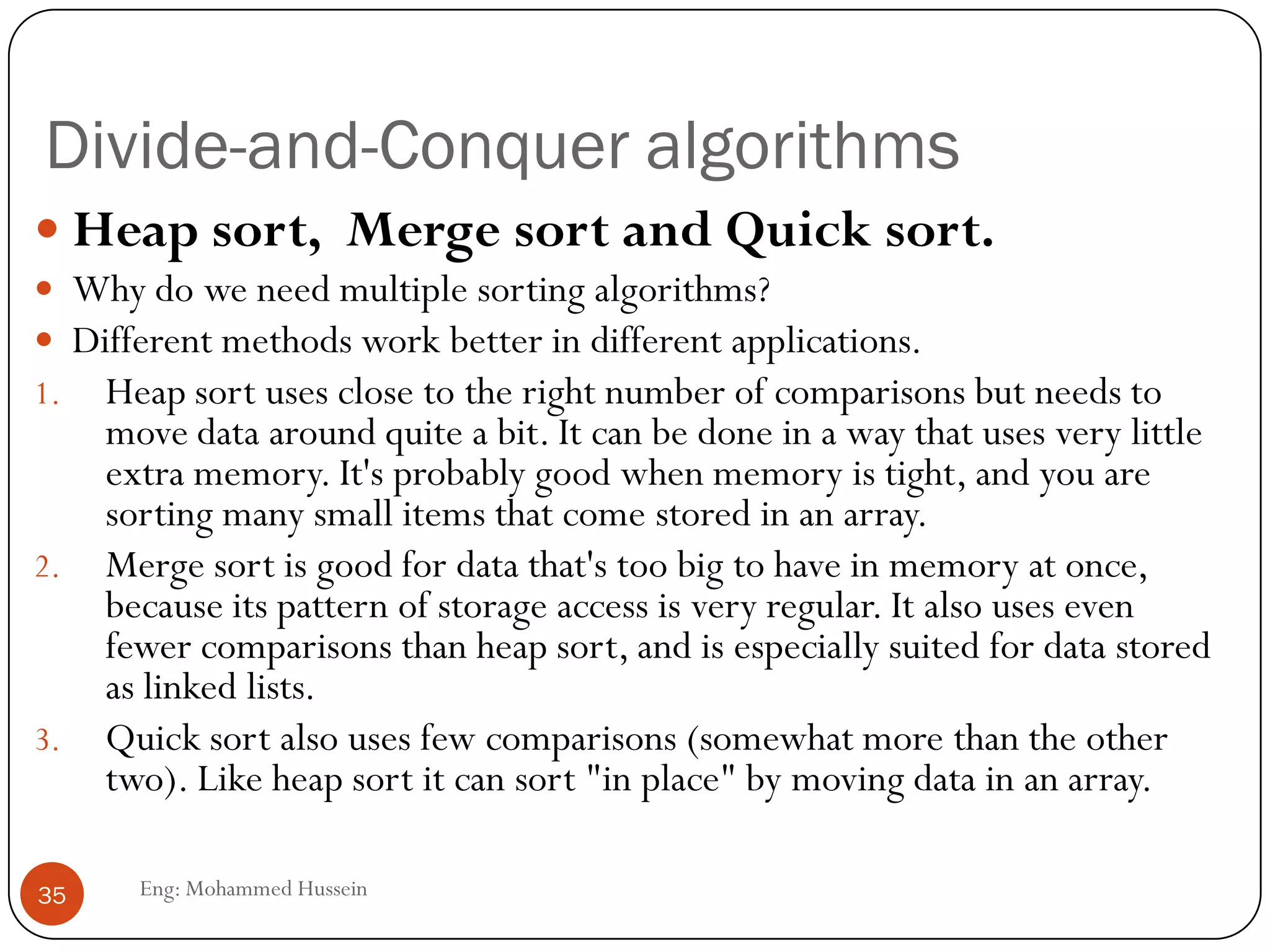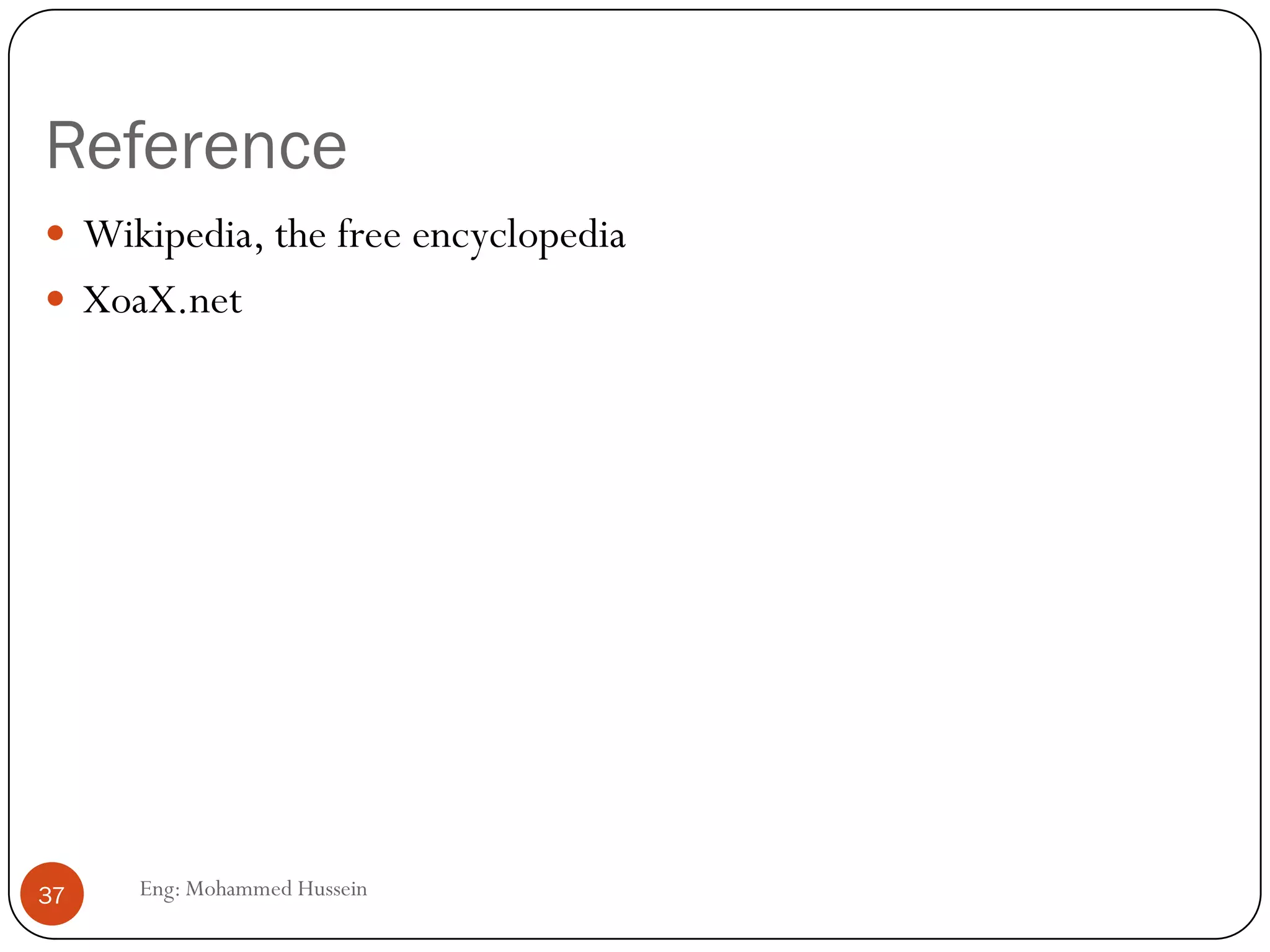The document discusses various sorting algorithms that use the divide-and-conquer approach, including quicksort, mergesort, and heapsort. It provides examples of how each algorithm works by recursively dividing problems into subproblems until a base case is reached. Code implementations and pseudocode are presented for key steps like partitioning arrays in quicksort, merging sorted subarrays in mergesort, and adding and removing elements from a heap data structure in heapsort. The algorithms are compared in terms of their time and space complexity and best uses.

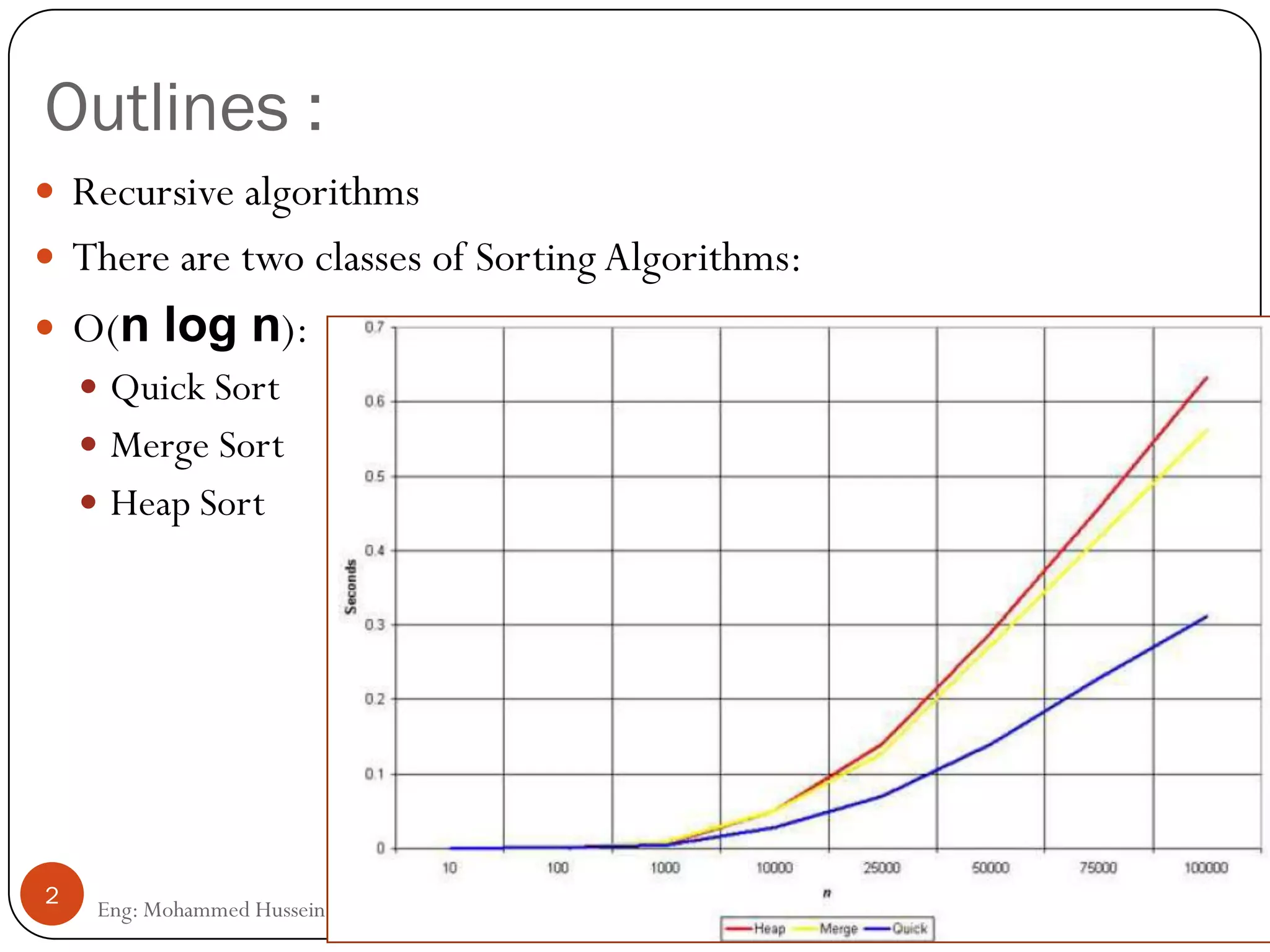
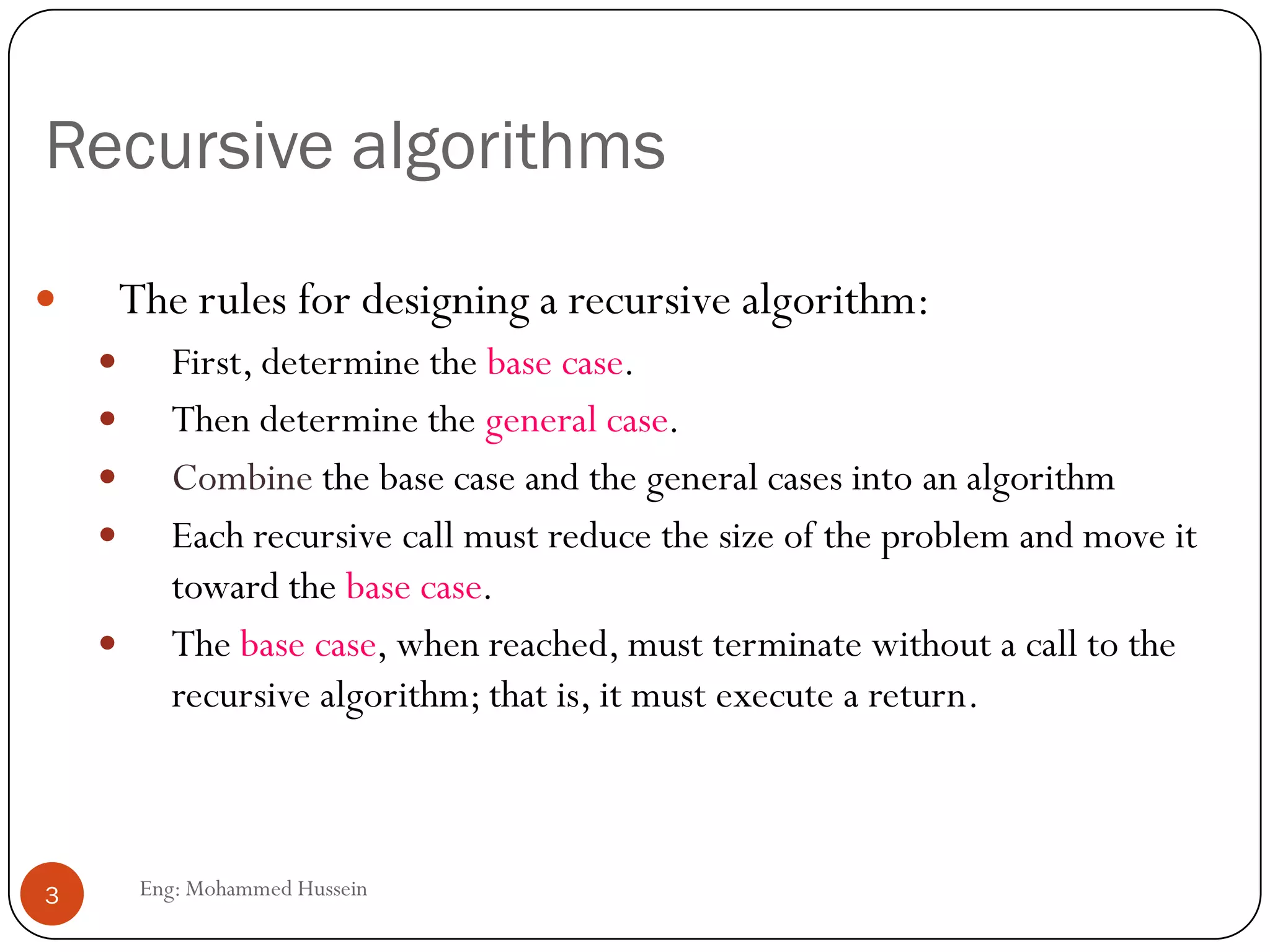

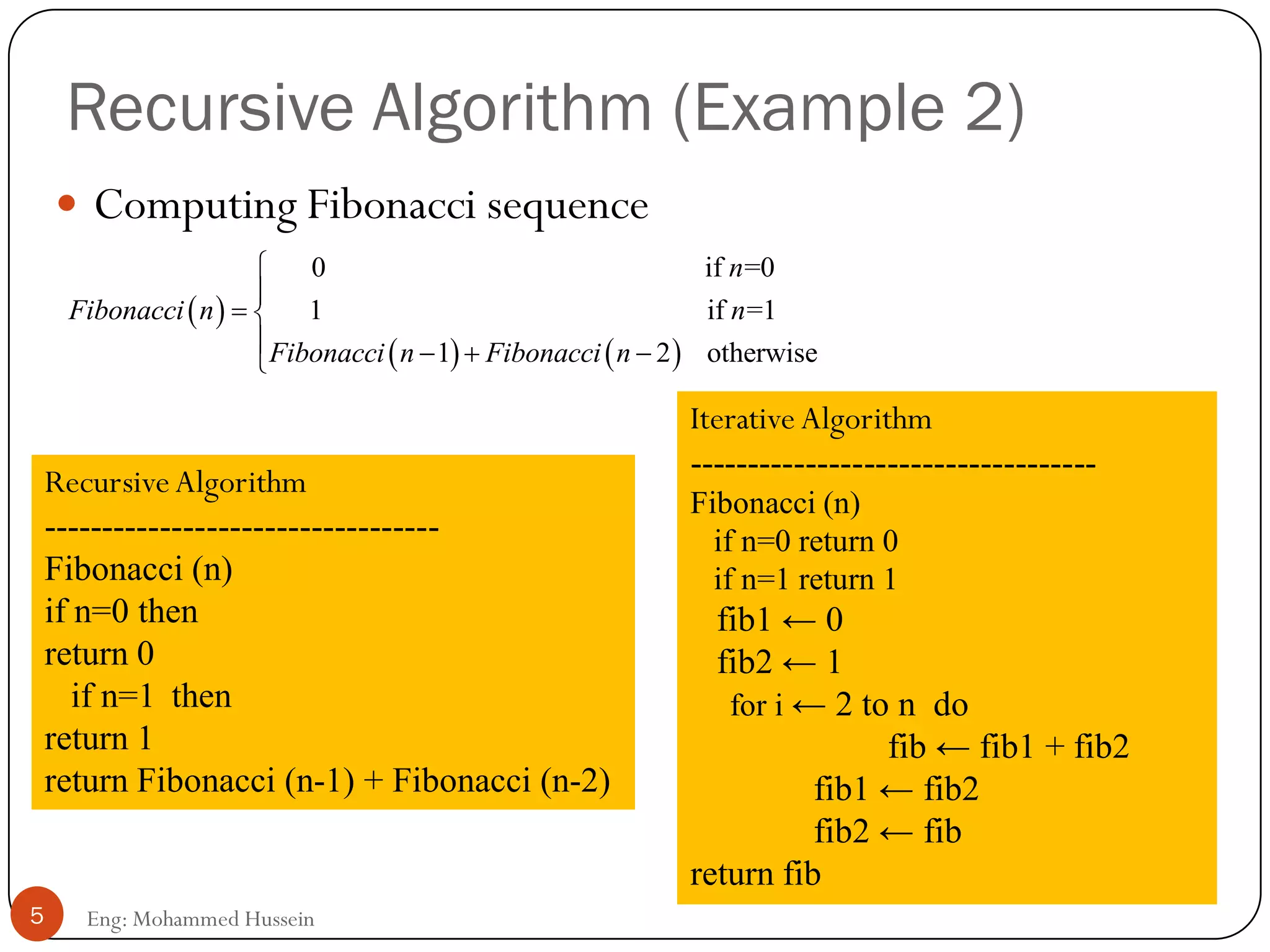
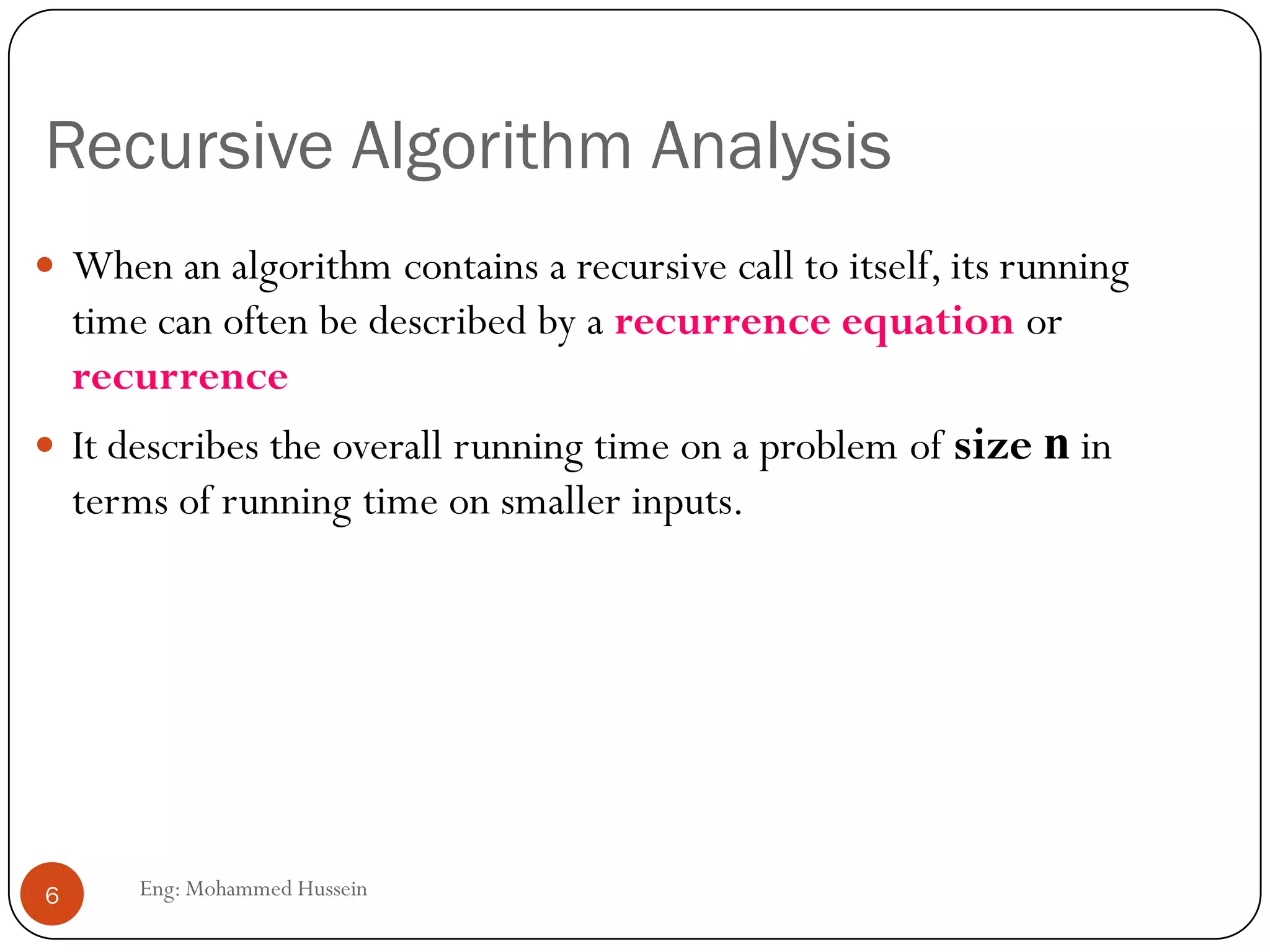
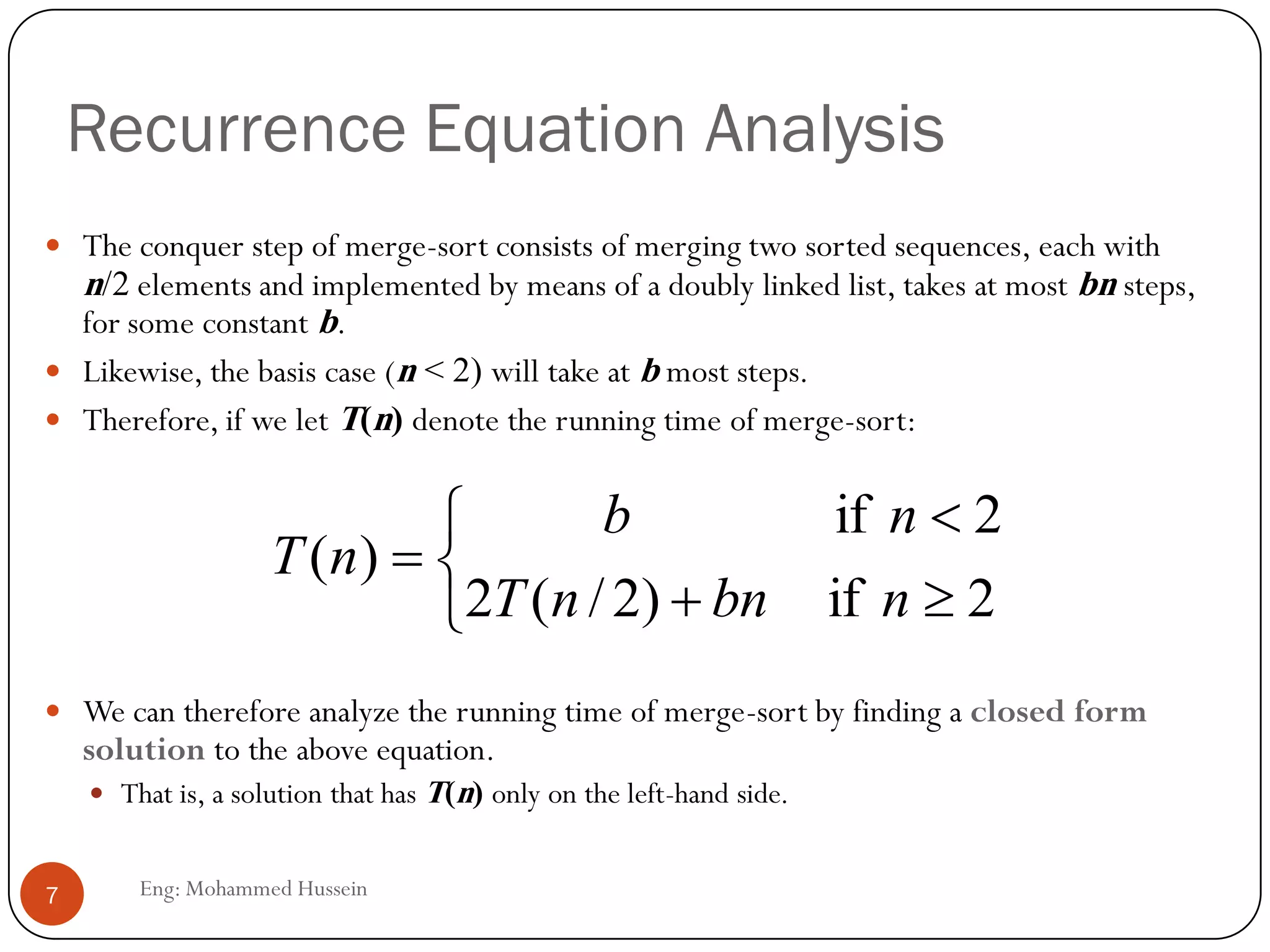
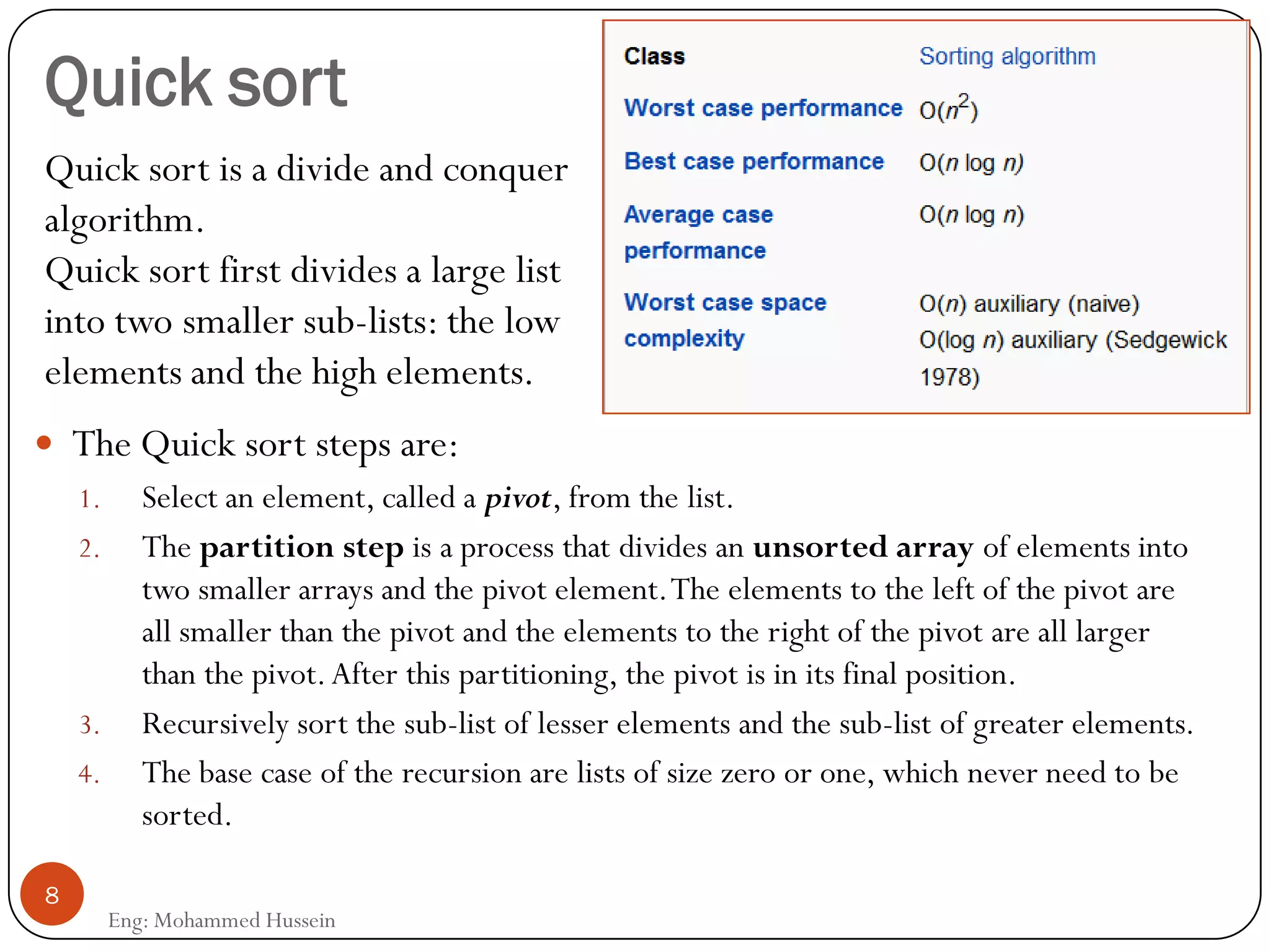
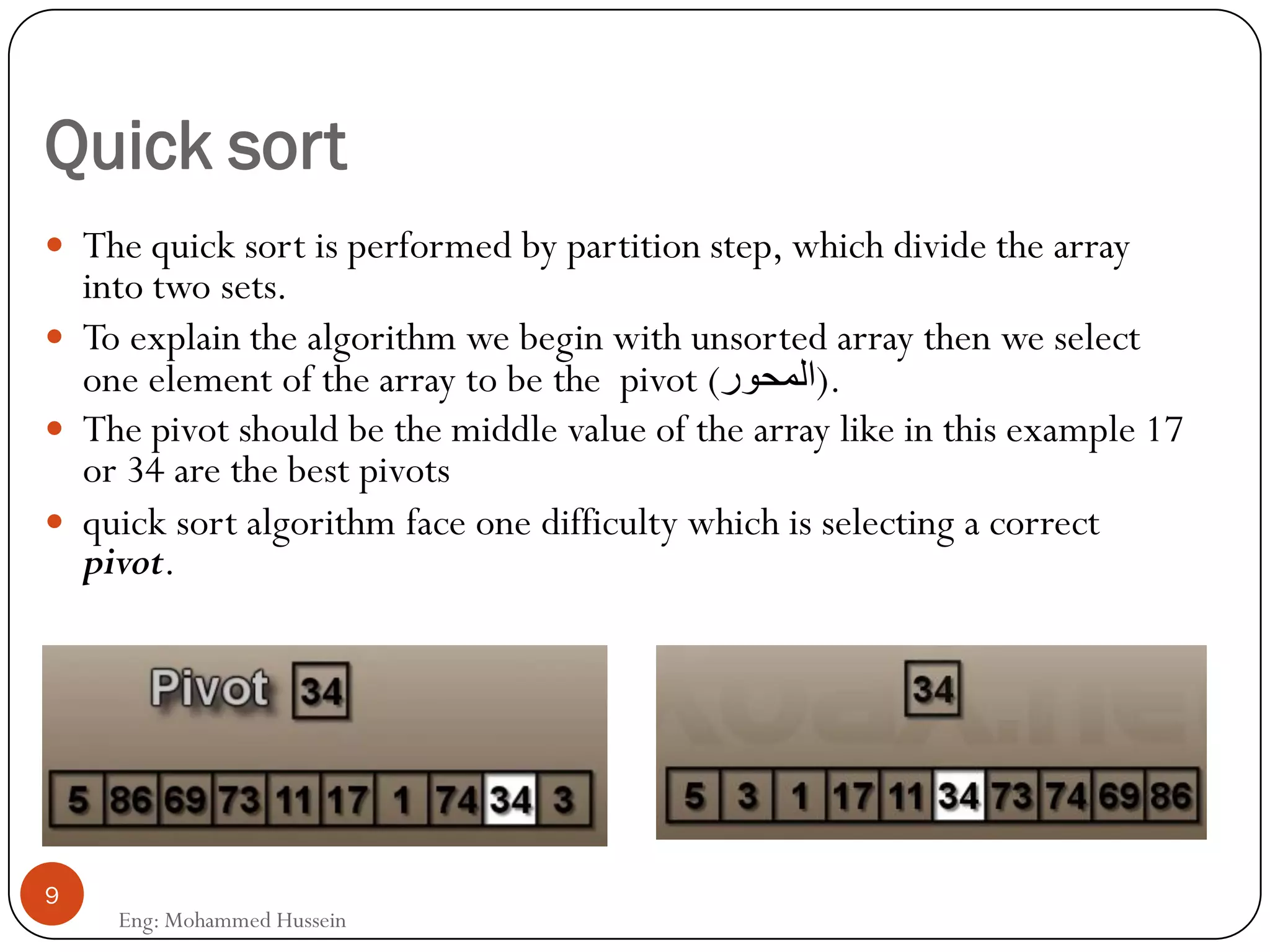
![Quick sort examples
10
Eng: Mohammed Hussein
In this example the first pivot is 4.
When the array elements became
like: [smaller <= 4 <= larger].
We call again the Partition function
recursively, which divide the array
before and after of the first pivot.
At the end all array have been
divided and all pivots collected in
the final array.](https://image.slidesharecdn.com/lecture5-130609112510-phpapp01/75/Quick-Sort-Merge-Sort-Heap-Sort-10-2048.jpg)
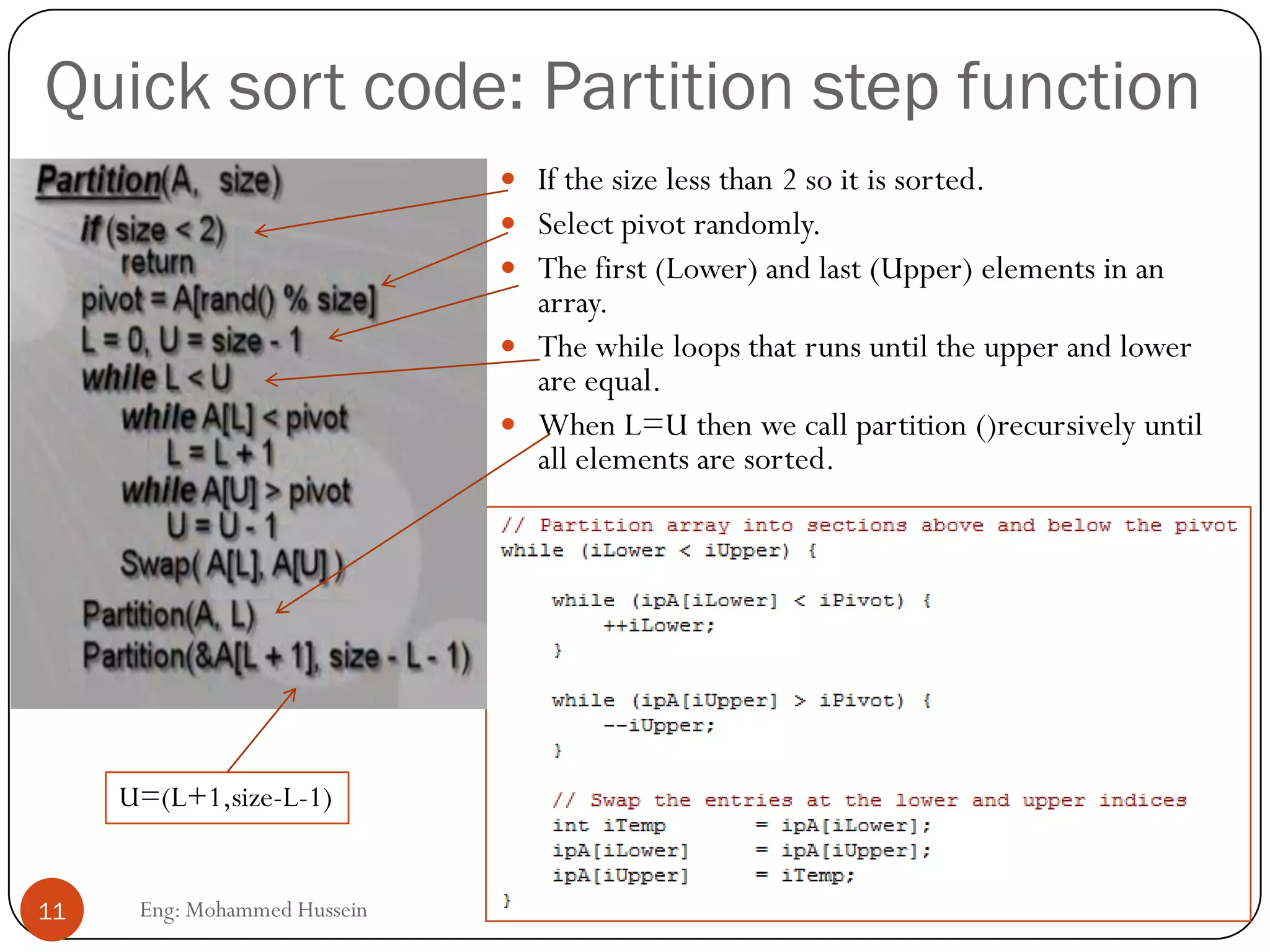
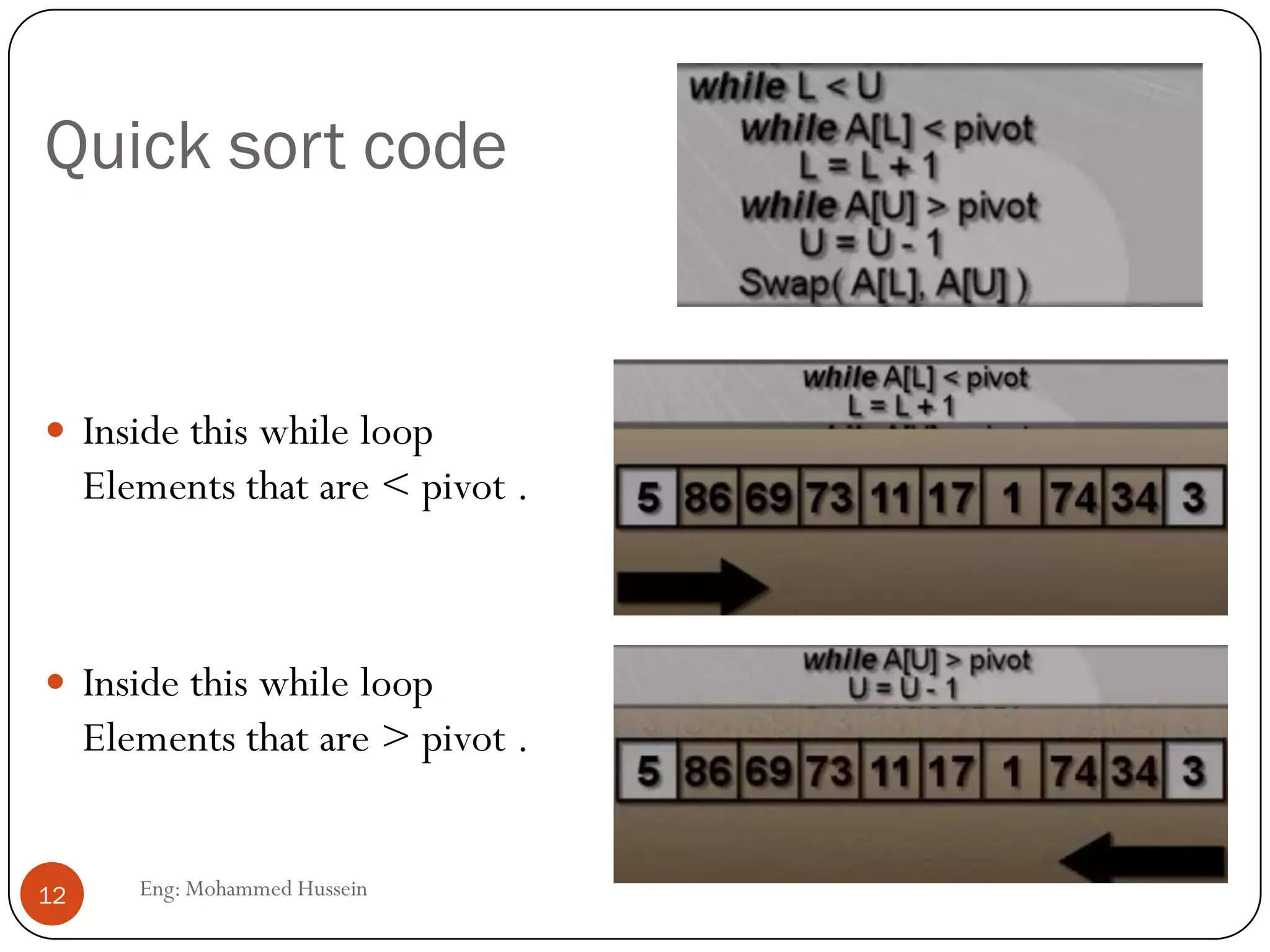
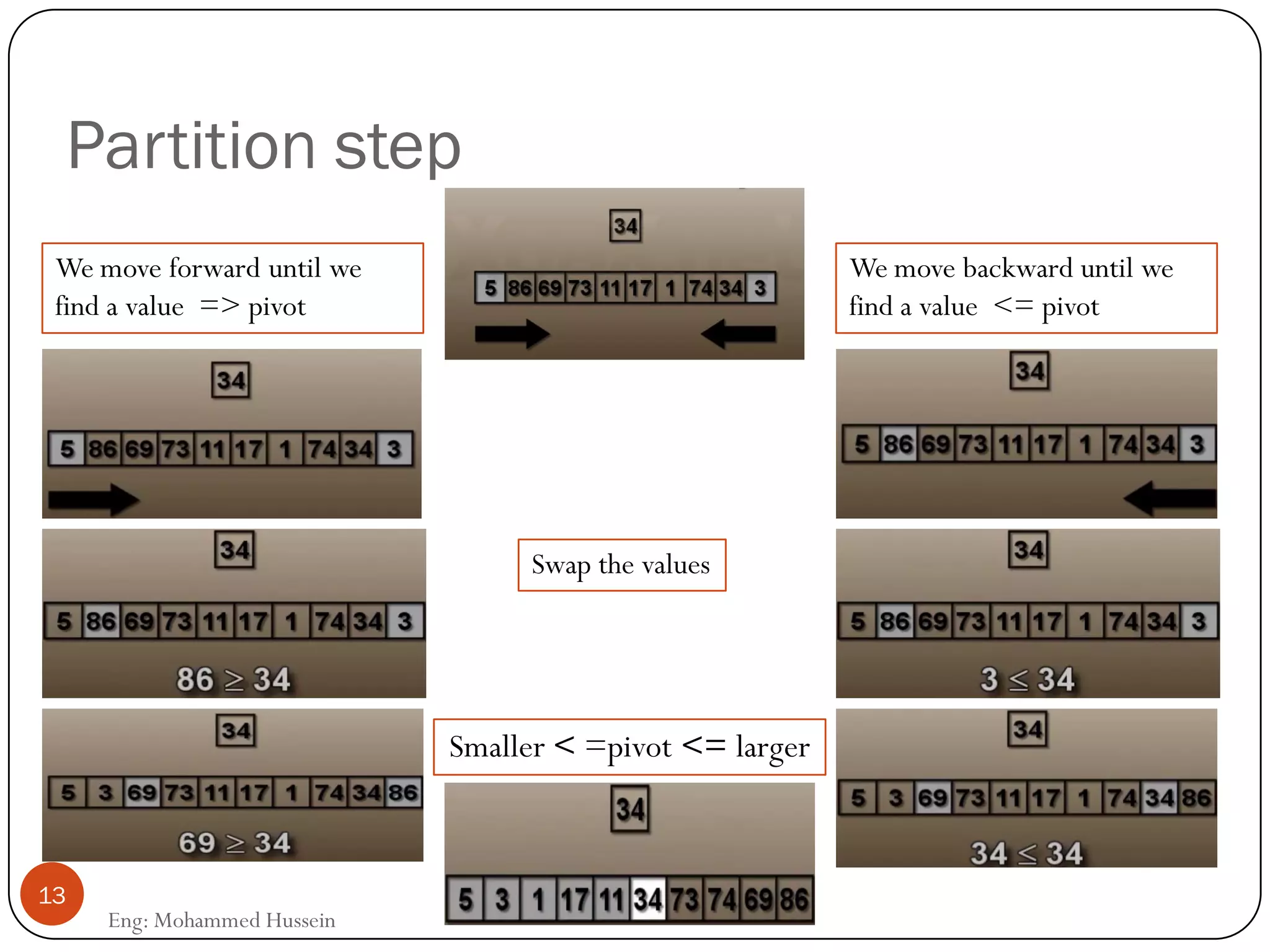

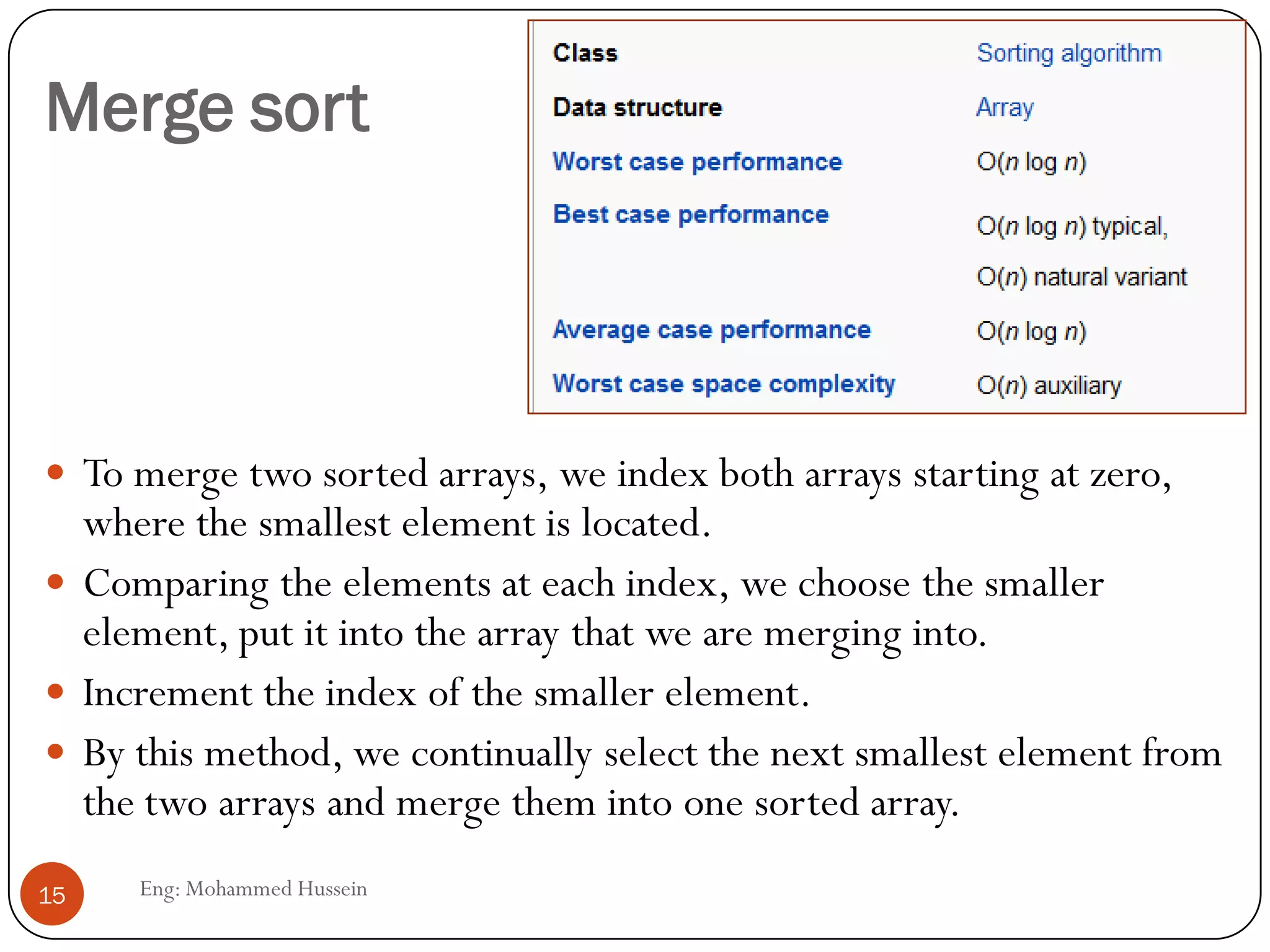
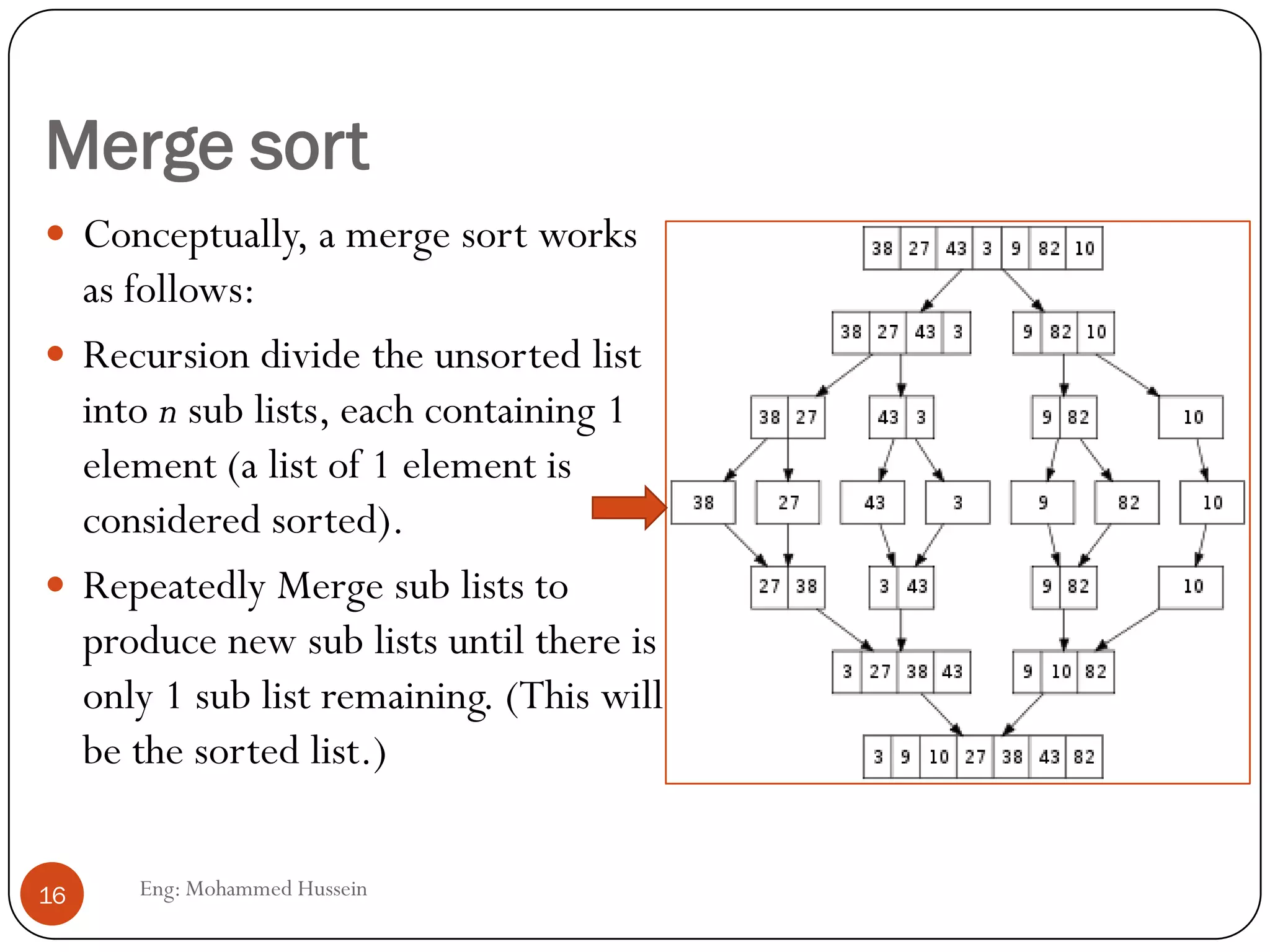
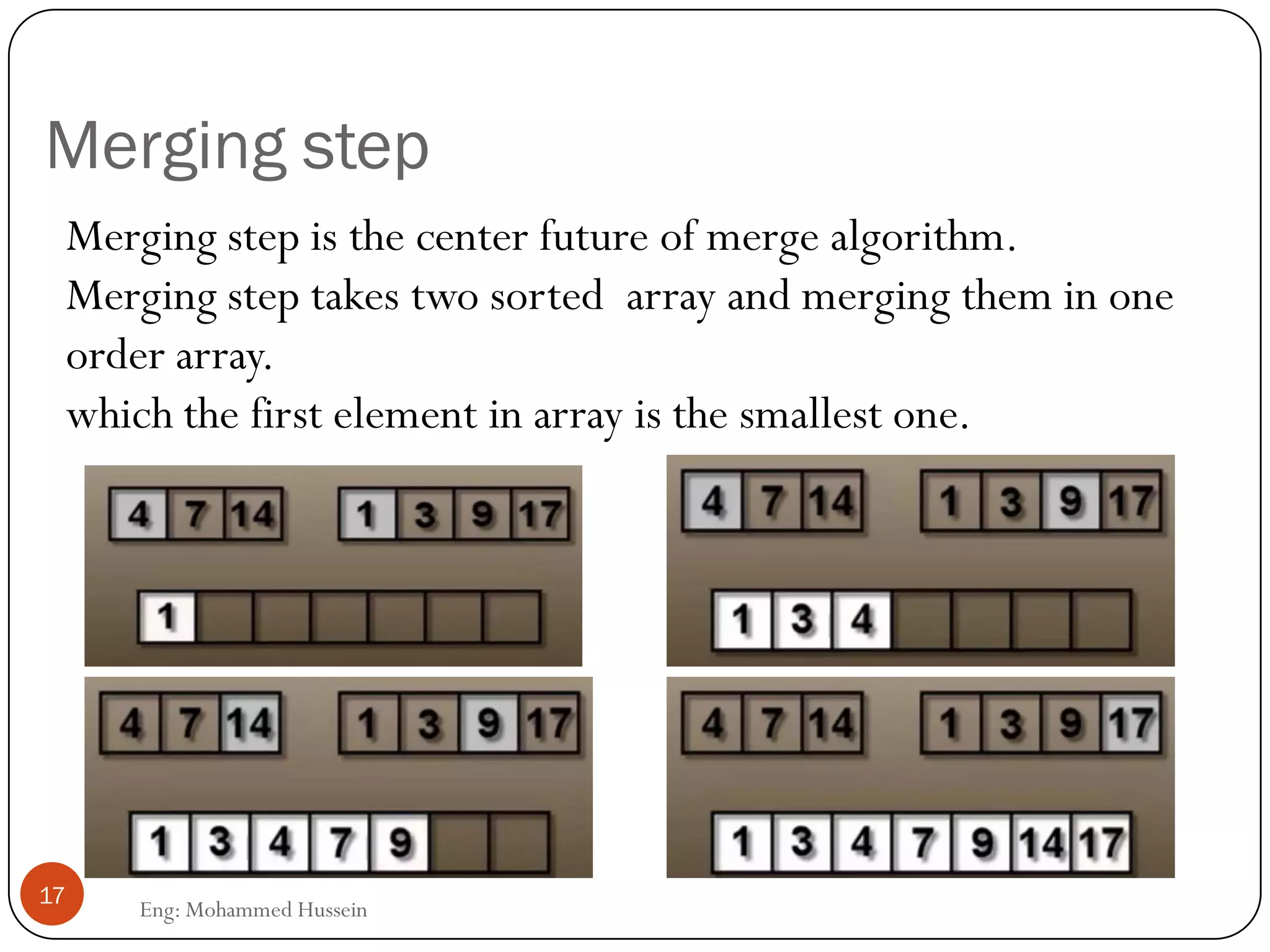
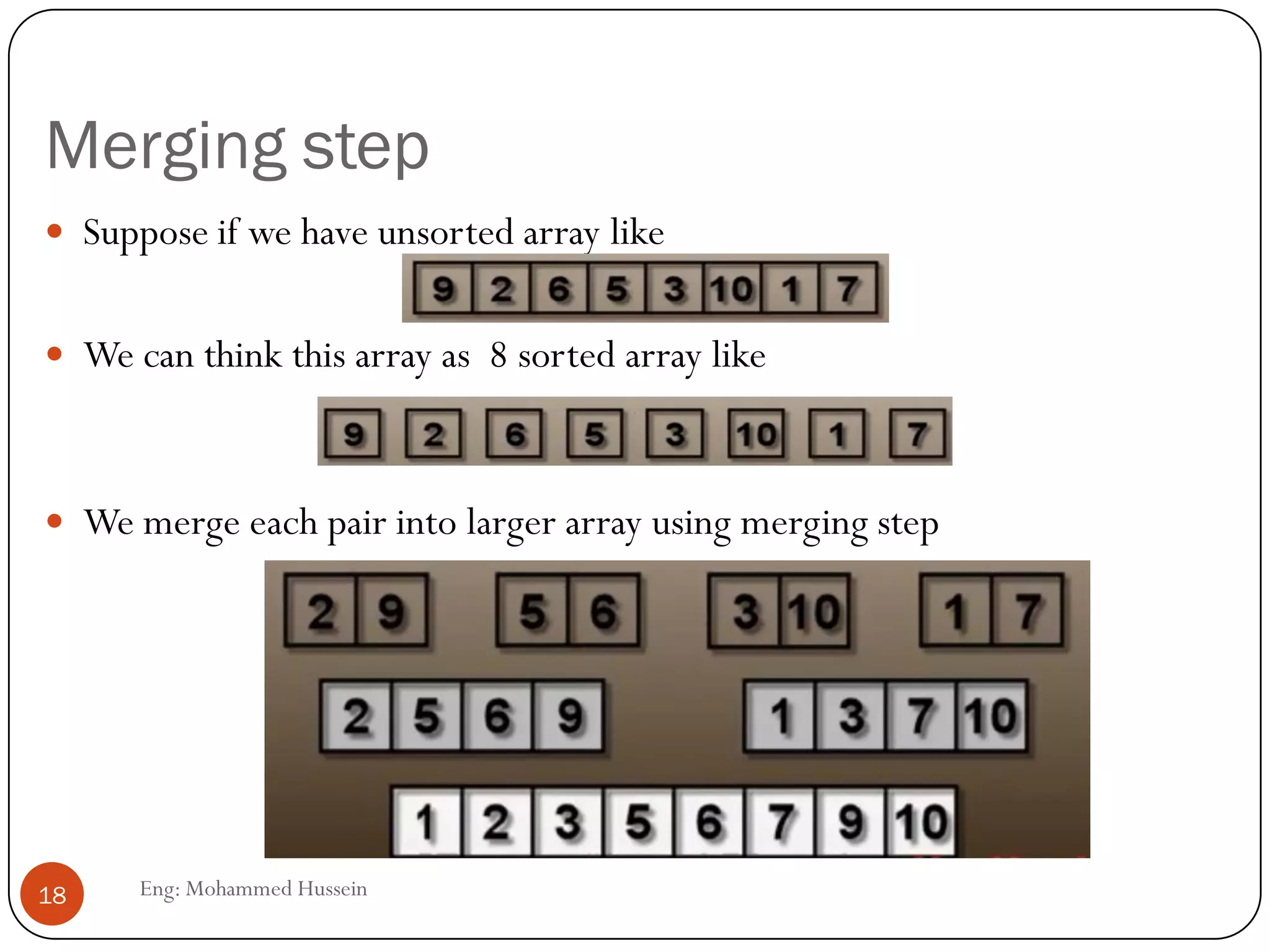
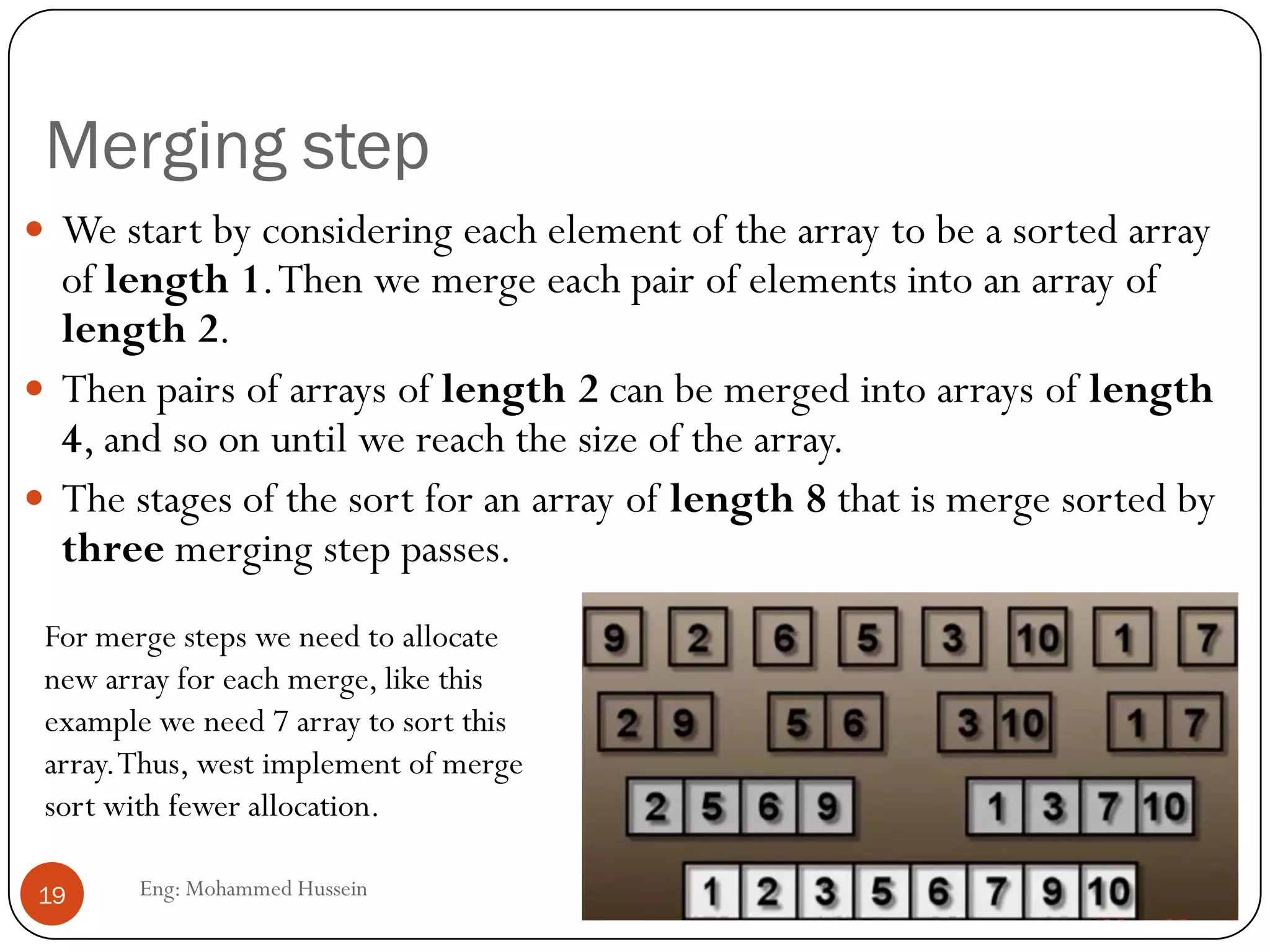
![Merge sort
• The outer loop start at one and doubles the index for each loop until size of
the array is reached. In side the inner loop, we call the merge function to
perform the merging steps.
1. &A[j]= pointer to start of the first array to be merged.
2. j= the start index of each arrays to be merged.
3. i= length of the first array (end index of first array).
4. Min(2i,size-j)=is the size of both arrays with the second array and based on
the pointers of first array.
• The second array may be shorter than i at the end of the arrayA.
20
Eng: Mohammed Hussein](https://image.slidesharecdn.com/lecture5-130609112510-phpapp01/75/Quick-Sort-Merge-Sort-Heap-Sort-20-2048.jpg)
